For the second year in a row, Christian and I used our new summer travel model: we divided his summer vacation into two pieces, taking one trip to a new country early in the summer and a second in France in late July or August.
This year we decided on Ireland for our new destination. Neither of us had visited before, we both looked forward to spending two summer weeks in a cooler climate, and there are direct flights from Lyon to Dublin.
We arrived and picked up our rental car, which was the most stressful part of the entire trip. While many credit cards these days do provide car rental insurance, allowing you to avoid paying on site for a much more expensive policy, Ireland is one of the very few countries where that does not work. Period. Don’t even try – I read all of the fine print so you don’t have to. Instead of stressing about it like I did, just accept ahead of time that you will be paying an outrageous amount of money for full coverage on site.
We left the airport as the sun was beginning to set and drove three hours north to Ballintoy, on the north coast of Northern Ireland. We arrived at midnight, so we didn’t really see much of the country until the next morning, when we got up early and took a walk along the coast to the Carrick-a-Rede rope bridge. The bridge was closed, and I’m not sure that I would have been willing to pay 14 pounds to cross it anyway, but the site was spectacular and we had it all to ourselves.
Here is Ballintoy, a mostly residential community.
Our Airbnb host warned us ahead of time that there are no grocery stores, but there are two pubs. Welcome to Ireland!
We stopped for a quick detour at the Dark Hedges – a narrow lane lined with beautiful beech trees that was apparently used as the Kings Road in some very famous tv show that I’ve never seen.
It turns out that there are a lot of Game of Thrones filming sites in Northern Ireland, so many that there are day long tours you can take to see them.
After that it was on to Giant’s Causeway, where hexagonal basalt pillars extend into the sea and do look a little bit like a road when you take a picture from the top. We got to experience the changeable Irish weather right away, going from sunshine to rain and back to sunshine over the course of less than two hours.
We drove west toward Letterkenny. There is no visible border between Northern Ireland and Ireland, which seemed odd to us since this is now a UK/EU border. The only thing that changed was the color of the road signs, and of course the currency: we needed British pounds in Northern Ireland, but Ireland uses the euro like the rest of the EU. Both countries drive on the left, something that we both became accustomed to pretty quickly. We did have to remind each other first thing in the morning almost every day though: it’s just a deeply embedded habit to pull out (even from parking on the left) and start driving the “normal” way. Whoever was not driving would say “Left! Left!”, and after that the day went pretty smoothly. We drove A LOT – 3,000 kilometers, more than 1,800 miles. We wanted to explore the small roads rural areas away from the cities.
Just after crossing into Ireland, we stopped at our first and probably most spectacular ring fort, the Grianán of Aileach, built in the sixth or seventh century and repaired/reconstructed in the 19th century. We enjoyed exploring the site and had our first good view of the Irish countryside from the top.
We had planned to have lunch in Letterkenny, not realizing that it was a “rally weekend:” specifically the Donegal International Rally. There were races on local roads on Friday, Saturday and Sunday (we were there on Saturday), and thousands of people who were not racing had also descended on the small city with their own souped-up rally cars. Three different people we talked to in town told us that people come to race, but even more people come to make trouble. The noise was incredible - imagine the loudest muffler-impaired car revving that you can, now times that by 1,000 - and so was the air pollution. We left as soon as we could, but not before finding a local sandwich shop where we purchased our first Irish food.
Christian had the first sausage roll of his life – it’s like a sausage patty wrapped in puff pastry – and of course ate it with a knife and fork like a French person. I had a “toasty,” a toasted sandwich with ham, cheese, and a sweet/hot pepper jelly. Both were delicious, but we were also very hungry, having eaten nothing since the sandwiches we packed and ate on the plane the evening before.
We passed through Glenveagh National Park (not worth the detour in the rain), then drove around Malin Head, supposedly one of the most spectacular coastal drives in Ireland. Not so much in the rain though. The cliffs were shrouded in mist and we couldn’t see the sea at all. We did see our first sheep though.
I found out later that one of the Letterkenny rally races is around Malin Head on the same road that we took:
This is a road with two way traffic. I certainly hope they close it to other traffic during the race.
Since we left Northern Ireland we have been in County Donegal, the poorest county in Ireland and one of the least populated, described as rural, isolated, and off the beaten path for most tourists. That may soon change now that Lonely Planet has included Donegal on its list of ten best regions in the world for 2024, but we drove for long stretches of time without seeing any people or other vehicles. I got out of the car at one point and took photos both ways along the road.
Donegal is also the county with the largest area of the Gaeltacht: the parts of western Ireland where Irish is recognized as the official language.[1] Children attend schools where the language of instruction in all subject is Irish – English is taught as a second language.
People were very proud of their Donegal identity, and we saw these green and yellow flags everywhere.
Gaelic Football, locally known as GAA, is the most popular sport everywhere in Ireland but especially in the Gaeltacht. We stopped and watched part of a local game, but quickly realized that we would need to read the rules to understand the game. What we saw was a confusing mix of running with the ball, kicking it, throwing it (but forward, not backward like rugby), and bouncing it on the ground - all while trying to avoid being tackled by the opposing team.
We continued through the rain and stopped at Siopa Mhicí, a local, family owned grocery store in Derrybeg for breakfast provisions. We booked Airbnbs for the whole trip, all of them rooms in someone’s home or apartment. (I wrote here about why I consider this the only ethical way to use Airbnb.) Many of these places did not allow or include kitchen access, so we had to be strategic about things we could buy to eat without having to cook them. Christian found a buttermilk Irish soda bread that turned out to be excellent. We also bought butter, a few oranges, and some typically British things that Christian had never tried before: Jaffa cakes and Jacob’s lemon creams.
I lingered in the produce section near a large display of “fresh dug” Queens potatoes.
I remembered seeing several roadside signs advertising these throughout the day as we traveled through Donegal. I asked a man who was restocking if they are local and special, and he said yes to both: they were dug this morning, from a farm less than 30 kilometers away, and they are the best potatoes not just in Ireland but in the entire world. (I learned later that this is a local opinion).
“What’s the best way to cook them?” I asked.
“Just boil them and eat them with butter and salt, skins and all. You’ll see, they’ll smile on you while you’re eating them.”
I told him that I would love to try them, but unfortunately the Airbnb just down the road where we are staying tonight doesn’t include kitchen privileges, so I have no way to cook them.
“What if you offered to share them with the owners? I’m sure they’d not say no.”
“Maybe, but I feel like it’s pretty presumptuous to arrive with a 2 kilo bag of potatoes…”
I reluctantly walked away and we continued our shopping. Five minutes later he found us in another part of the store and handed me a small bag:
“This is a sample. No charge. Just tell the cashier that I gave them to you. You can’t pass up these potatoes.”
We had already experienced the renowned Irish warmth and friendliness earlier in the day, but this was the first of several times in Ireland that we were completely shocked by the kindness of strangers. I thanked him effusively and looked forward to being able to cook them soon.
We spent the night in the tiny village of Kincasslagh (Cionn Caslach in Irish), population 40, still large enough for a pub apparently: Wikipedia says that there is one, but we didn’t see it. We met out charming hostess and checked in, then drove 15 minutes to Burtonport (or more correctly Ailt a' Chorráin) for dinner at a pub and restaurant called the Lobster Pot. We were the only non local people there, but everyone was friendly and welcoming. We each had a local beer (blonde for Christian, IPA for me) and Christian had the best fish and chips he’s ever eaten.
I had a truly amazing fish chowder. I was so hungry that I forgot to take a picture of it, which means that I must have been VERY hungry indeed. I ordered fish chowder four more times at other places, but it never came close. If you ever make it to this western edge of Donegal, you must eat at the Lobster Pot.
We slept well and woke to clearer weather in the morning. Here is the harbor of Kincasslagh, just behind our Airbnb house.
The bread Christian had chosen yesterday at the store made a wonderful breakfast, especially with Irish butter.
Back on the road, our next stop was the Kilclooney Dolmen. We parked near the Dolmen center and saw a group of tourists (who turned out to be German) crossing the road and entering a pasture. We followed them. I was very happy to be crossing an Irish pasture full of sheep, but then again I was not paying careful attention (like Christian was) to avoid all of the sheep droppings…
I enjoyed crossing the stiles. It wasn’t my first time, but I still remember how excited I was the first time I saw one, in Wales, at the age of 26. I can’t be the only one who wondered, the nursery rhyme among my earliest memories: “There was a crooked man, who walked a crooked mile, he found a crooked sixpence upon a crooked stile…” Seeing an actual stile 20 some years later was revelatory, and some of that sense of excitement and discovery is still with me when I see one.
The Dolmen was well worth stopping for. It’s estimated to have been built 5,000 years ago, which is just astonishing.
We made our way back across the pasture and spent several minutes cleaning the bottoms of our shoes on various clumps of wet grass. As we approached our car, an Irish man heading toward the church asked us if we saw the dolmen, then asked what we thought it was built for. He told us that it’s a calendar: that on the day of the summer solstice, the sun strikes the rock that stands at the back of the dolmen, between the two pillars. It only happens at sunrise on that one day of the year. He showed us spectacular photos that he had on his phone of the event: every year he gets up at 4am and positions himself where he can see it. But he also told us that the last time he was able to see it and take photos was 2004: it has been cloudy and/or raining every June 21st for the last 20 years.
The church bells started ringing as he spoke with us, and within 5 minutes more than a dozen cars and nearly 30 people appeared out of nowhere. It was Sunday morning, and a clear reminder that Ireland remains a very Catholic country.
We drove the narrow and winding road from Ardara to Glencolmcille - through a glacial valley with remnants of stone paddocks, the across the Glengesh pass.
We found significant peat harvesting happening after Glencolmcille. I asked Christian to stop so I could explore and take photos. The first stage is using a special machine that cuts into the bog and turns over regular rectangles of peat.
They let it air dry until it’s lighter in color and starts curling, then stack the bricks into pyramids for the wind to blow through, drying it further.
Then it is stacked for transport. Much of it ends up in the white plastic bags that we saw everywhere once we started noticing them.
Many people in Ireland are still burning peat in their stoves. Now that I know what it looks like, I realized that it was stocked next to the stove at the Lobster Pot.
Peat became the main household fuel in Ireland in the 1600s, when the forests and wood were all gone. While people in cities today use gas or electricity for heat and cooking, many houses in rural areas that are a hundred or more years old are not convertible to modern heating systems without a major architectural overhaul.
Burning peat is a terrible idea from a climate change perspective. It’s similar to coal in formation: in fact, it is sometimes considered the first stage of coal. Peat is formed by hundreds of years of plant material that has decomposed without oxygen, accessible in bogs near the surface rather than deep beneath the earth. Burning it releases all of that stored carbon directly back into the atmosphere.
The Irish government outlawed peat as a fuel in 2022, but it left a loophole for people to “cut” (harvest) their own. They can also sell it to friends and family. Based on the vast amounts of peat harvesting we saw in many areas of western Ireland, this is still a profitable business.
People, including me, also like the smell. It’s an herby kind of smoke, very distinct, so much so that you can buy a tiny little porcelain cottage at a souvenir shop that burns even tinier discs of real peat. It’s nostalgic for a lot of people - probably like the smell of woodsmoke from chimneys on a winter evening for those of us who live in Minnesota.
Our next stop was Slieve League, written up in guidebooks as the most spectacular cliff views in Ireland. It definitely lived up to that reputation, but it helped that we were also enjoying a spectacularly sunny day.
We hiked to the viewing platform and took our time enjoying the views while we ate a picnic lunch of bread and cheese.
After that I drove three hours without stopping to Westport. We made it just in time to buy a few groceries (more butter, salad greens that we ate straight from the bag, and local smoked fish) and stopped for a pint in a pub while we were in the town center. Christian had an Irish lager, I ordered half a pint each of Guinness and Murphy’s Irish Stout so I could do a side by side taste test. The Guinness won.
We settled into our Airbnb and cooked our famous Queens potatoes on the strangest (and slowest) stove I’ve ever seen: the burners were built into the top of a toaster oven. It took more than twenty minutes for the water to even come to a boil… We ate delicious local smoked mackerel while we were waiting.
And finally for the moment of truth: are they really that good?
Yes. Christian admired the pure taste of potato with a hint of something more, perhaps the earth itself. The adjective that came to mind for me was “profound” - potato all the way down. They were also very floury in texture, which meant that they soaked up a lot of butter - that may be another reason for their popularity.
Next up for Ireland is County Mayo, Conemarra and the Cliffs of Moher, but I may write on other topics first. This post took a very long time, mostly because of the photos. I hope you enjoyed them!
[1] I used to call this language Gaelic or Irish Gaelic, but I was gently but firmly corrected by our hostess in Dingle. The traditional language of Ireland is Irish.
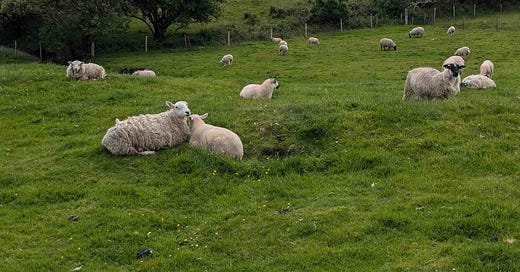


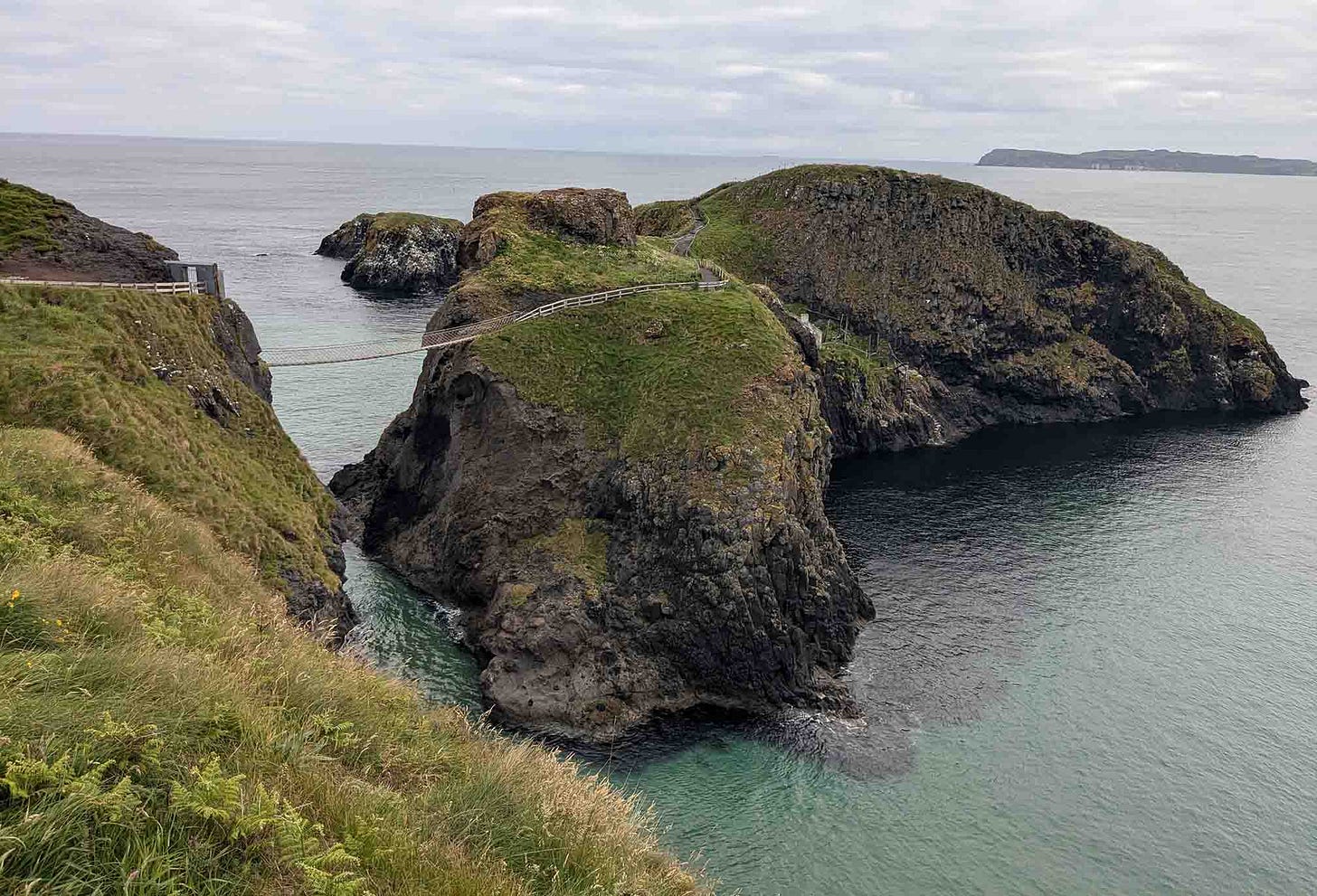

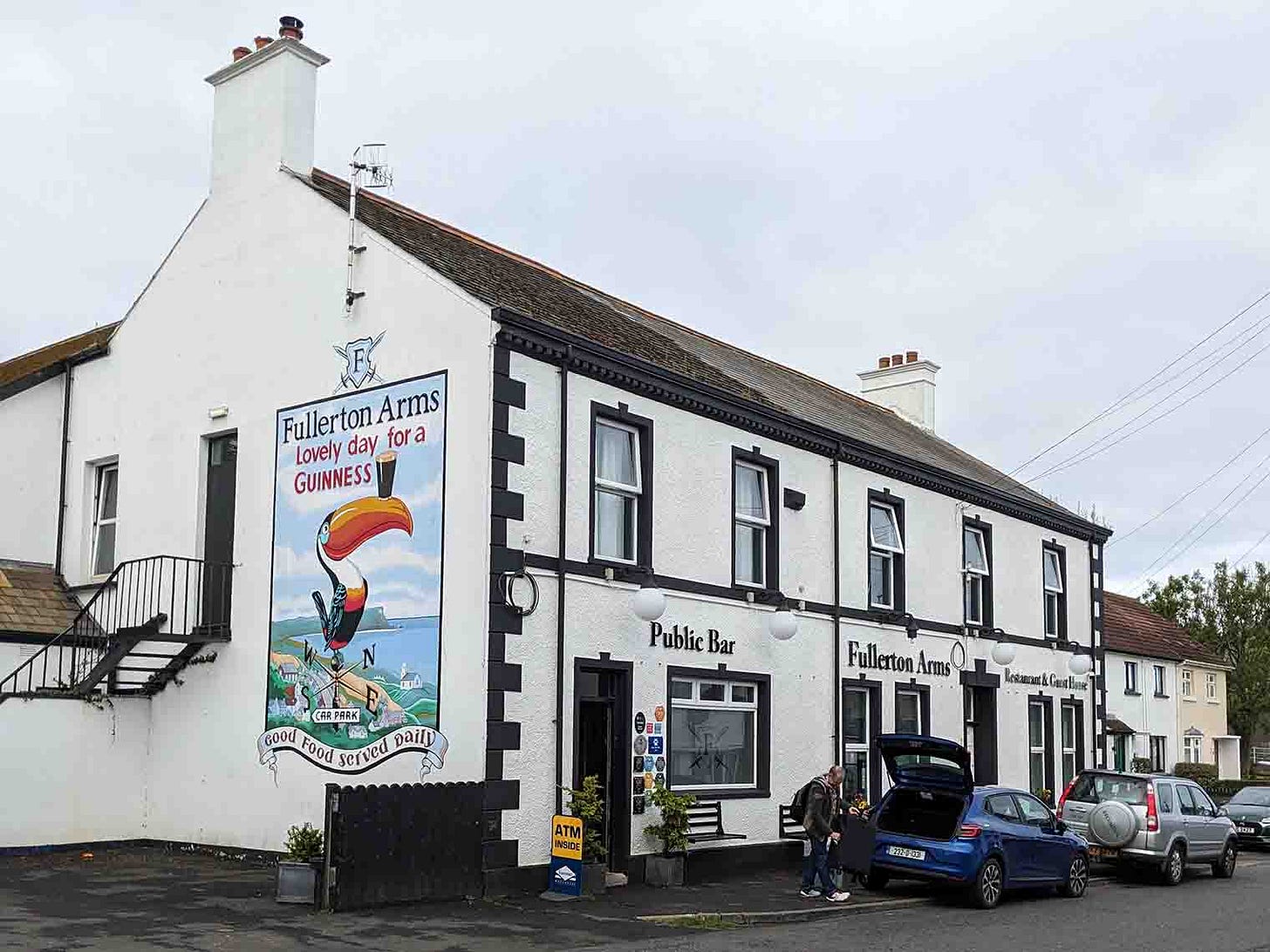
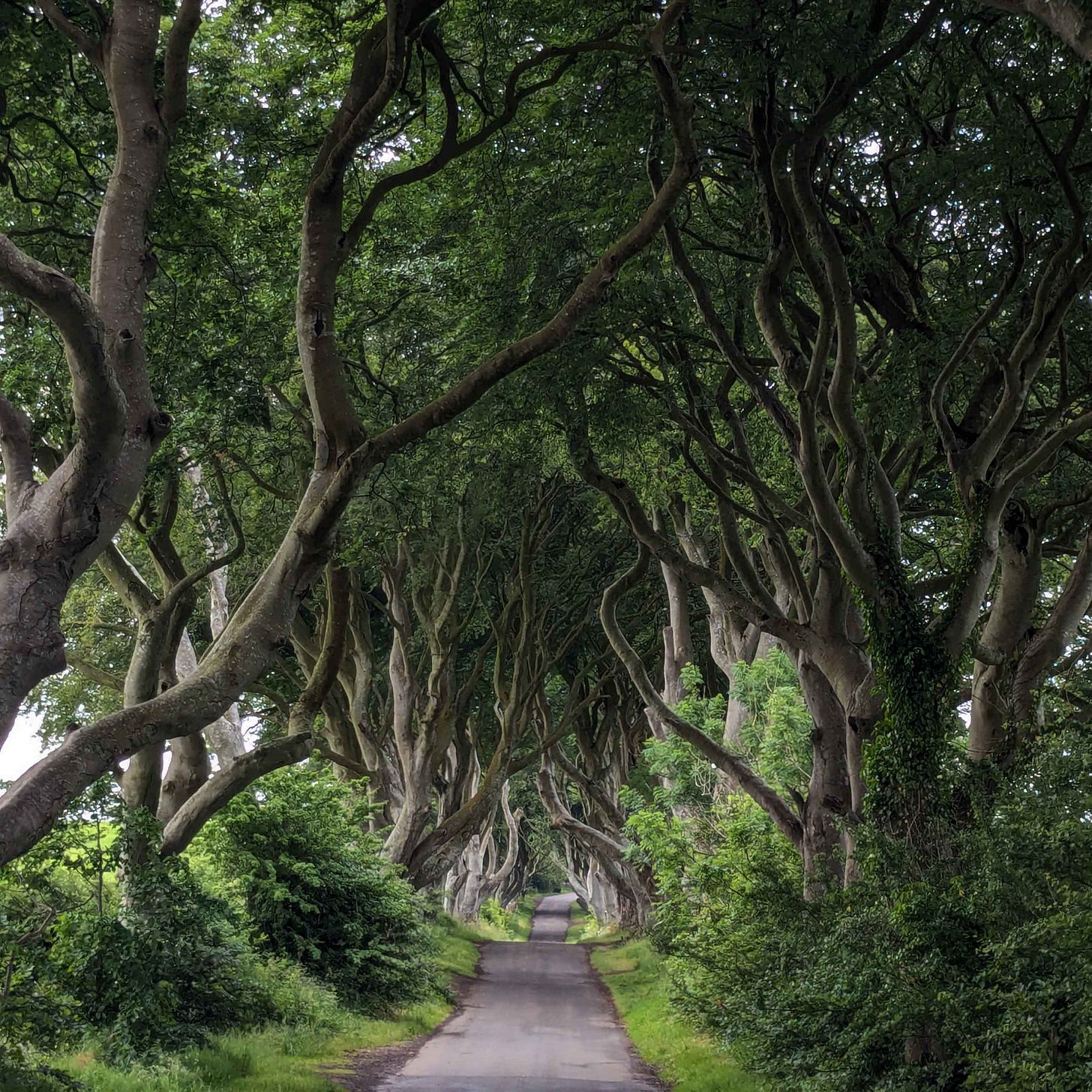
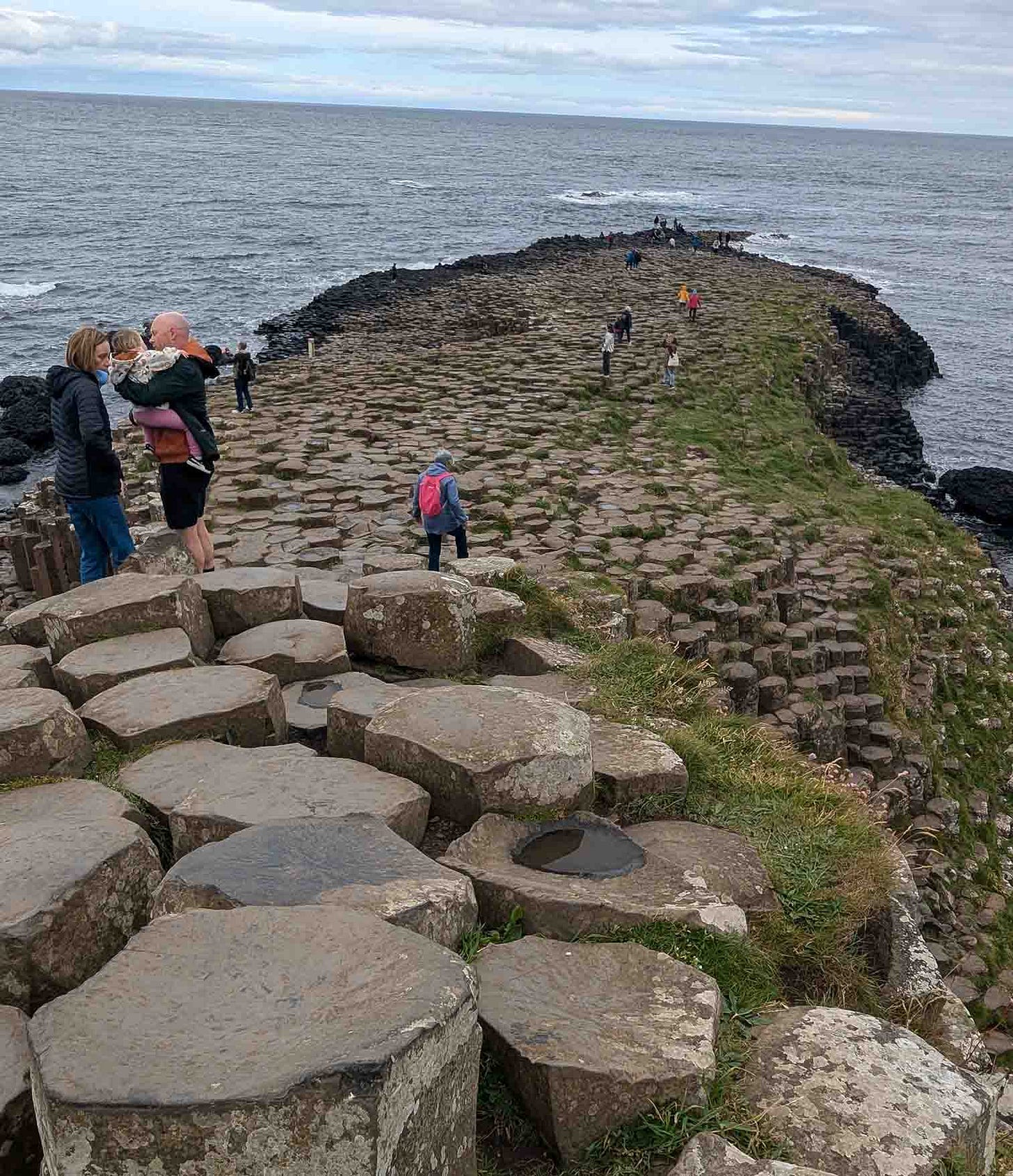
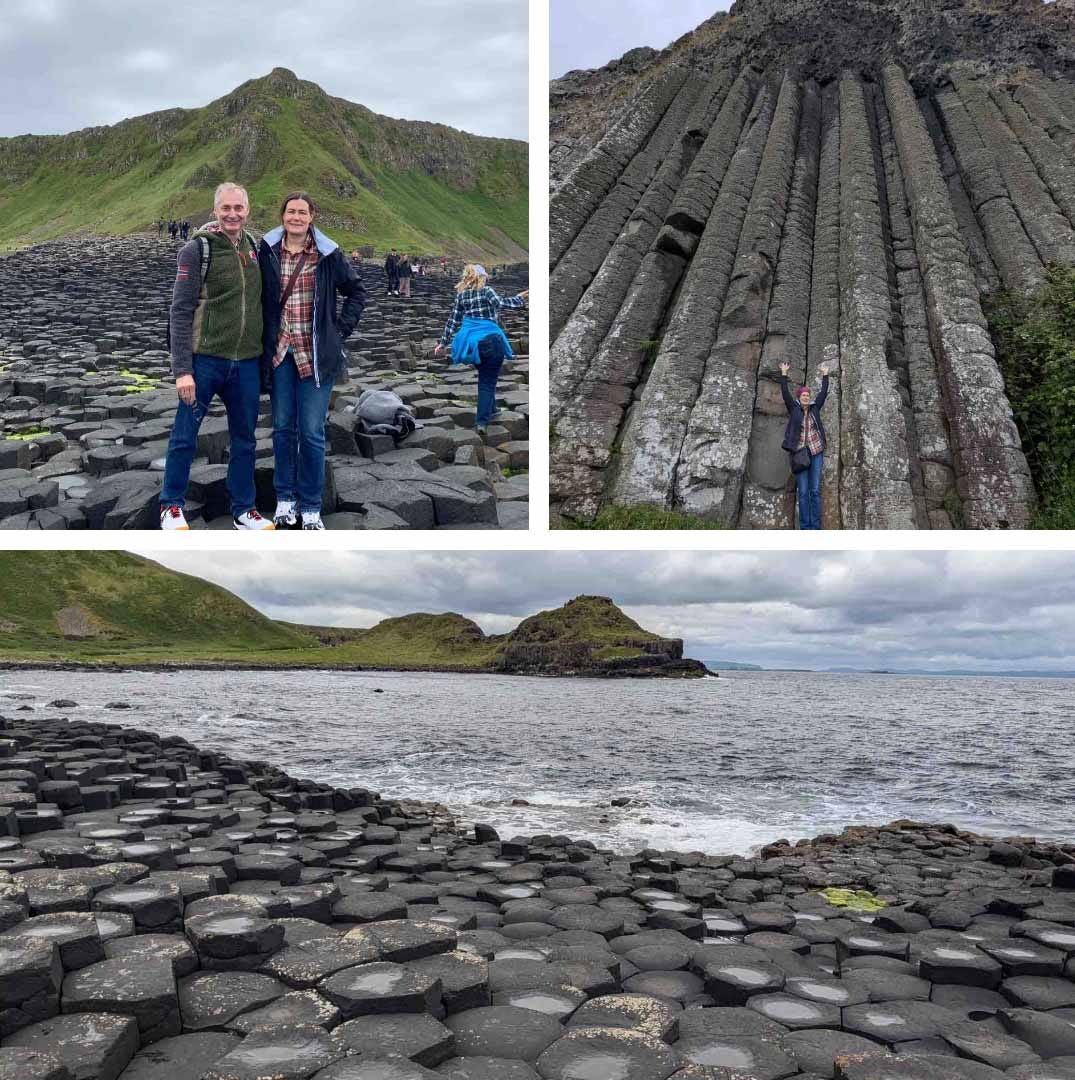
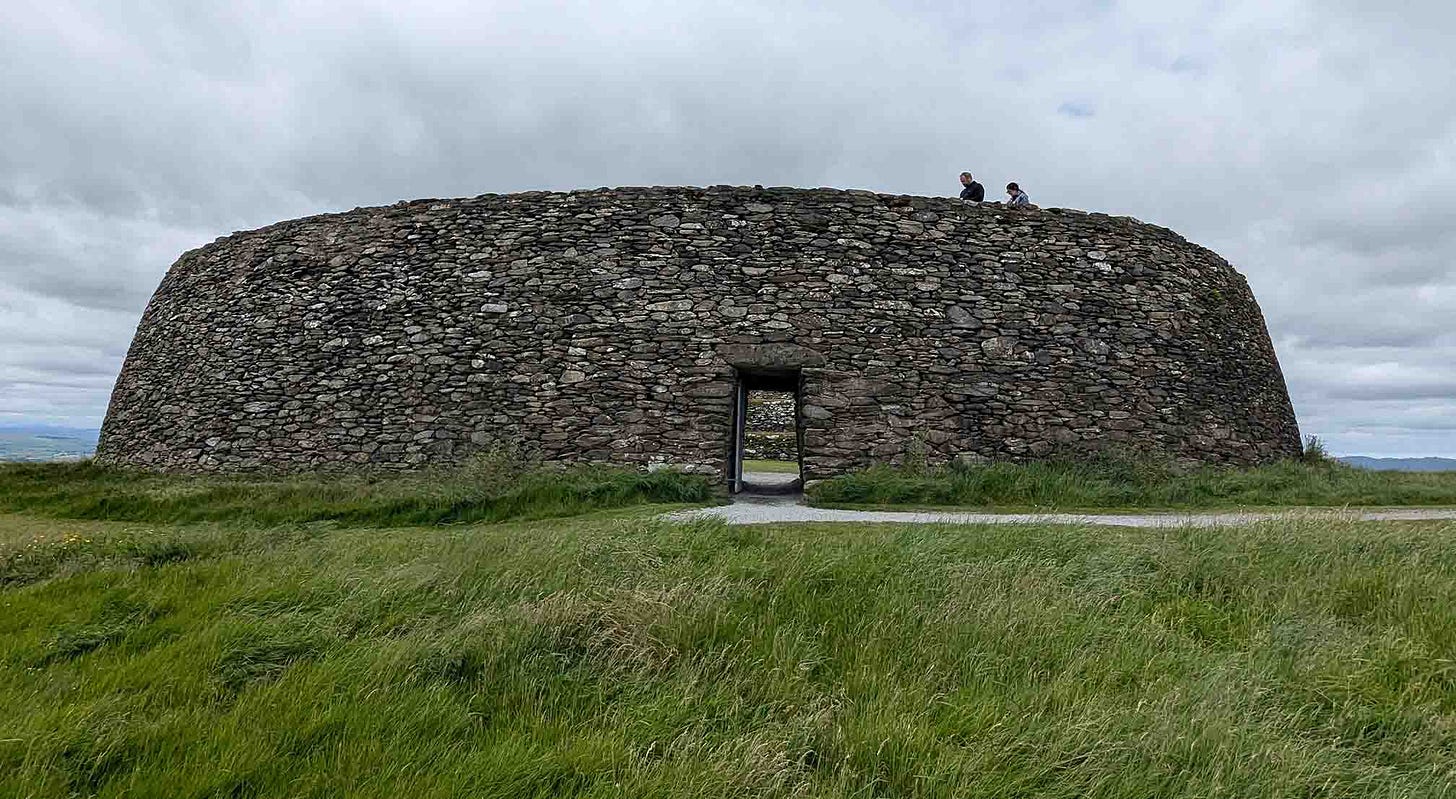

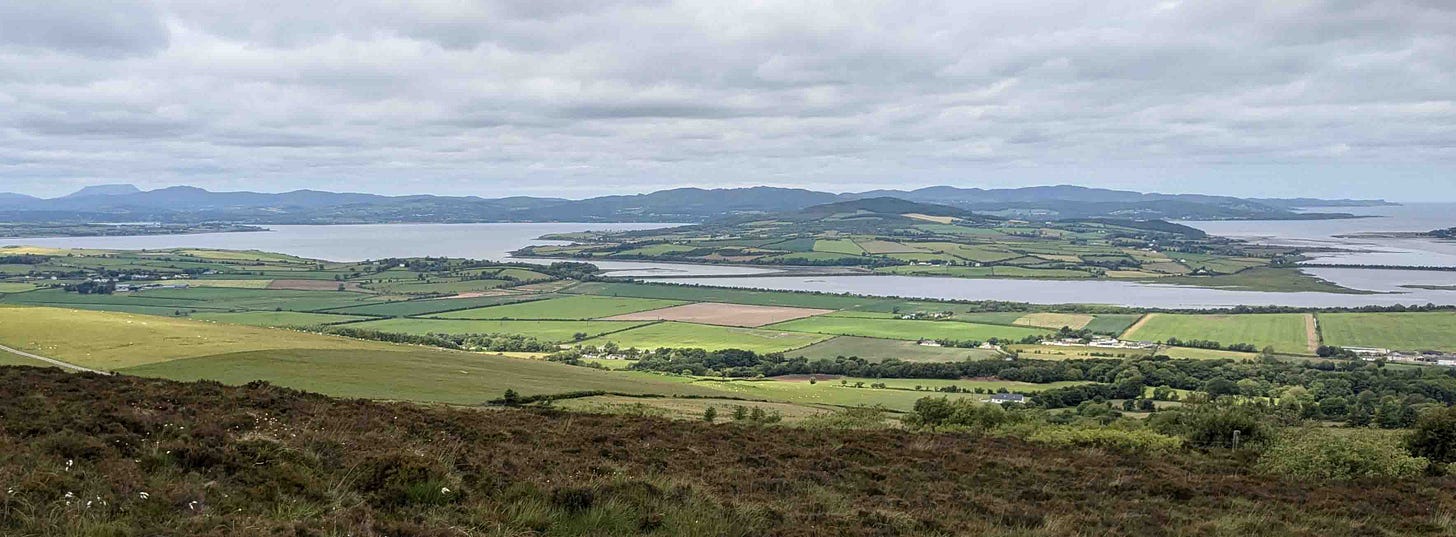
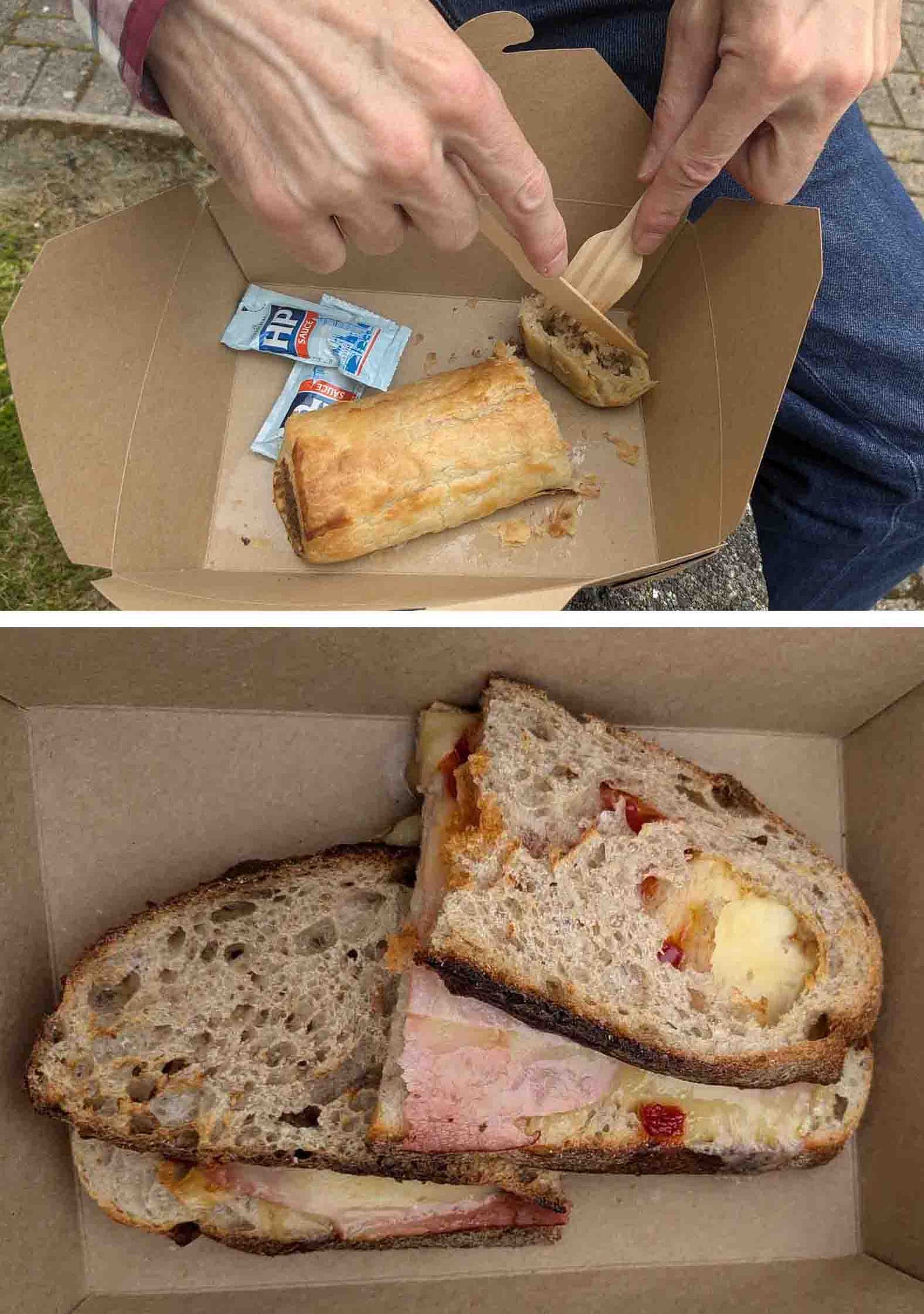
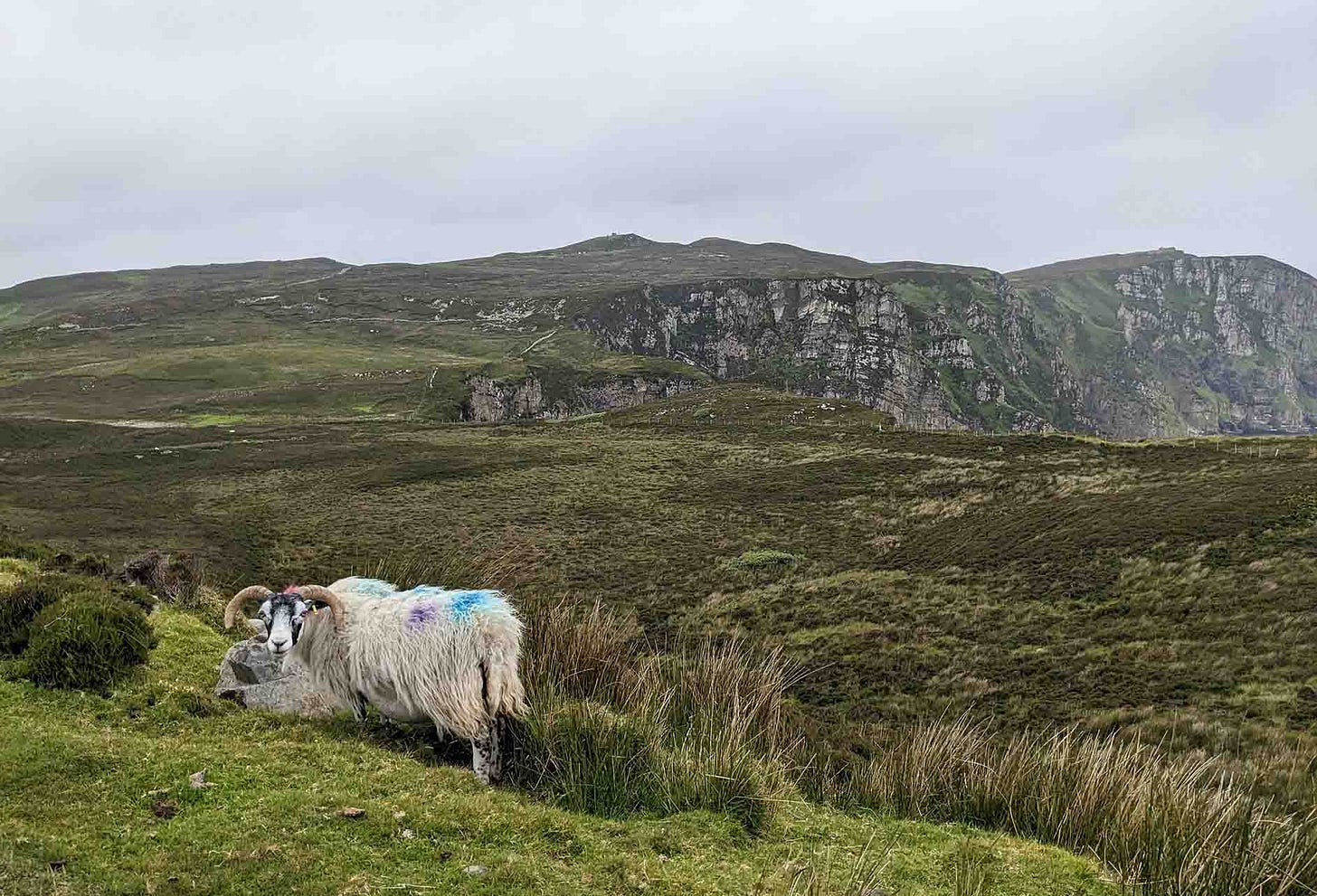
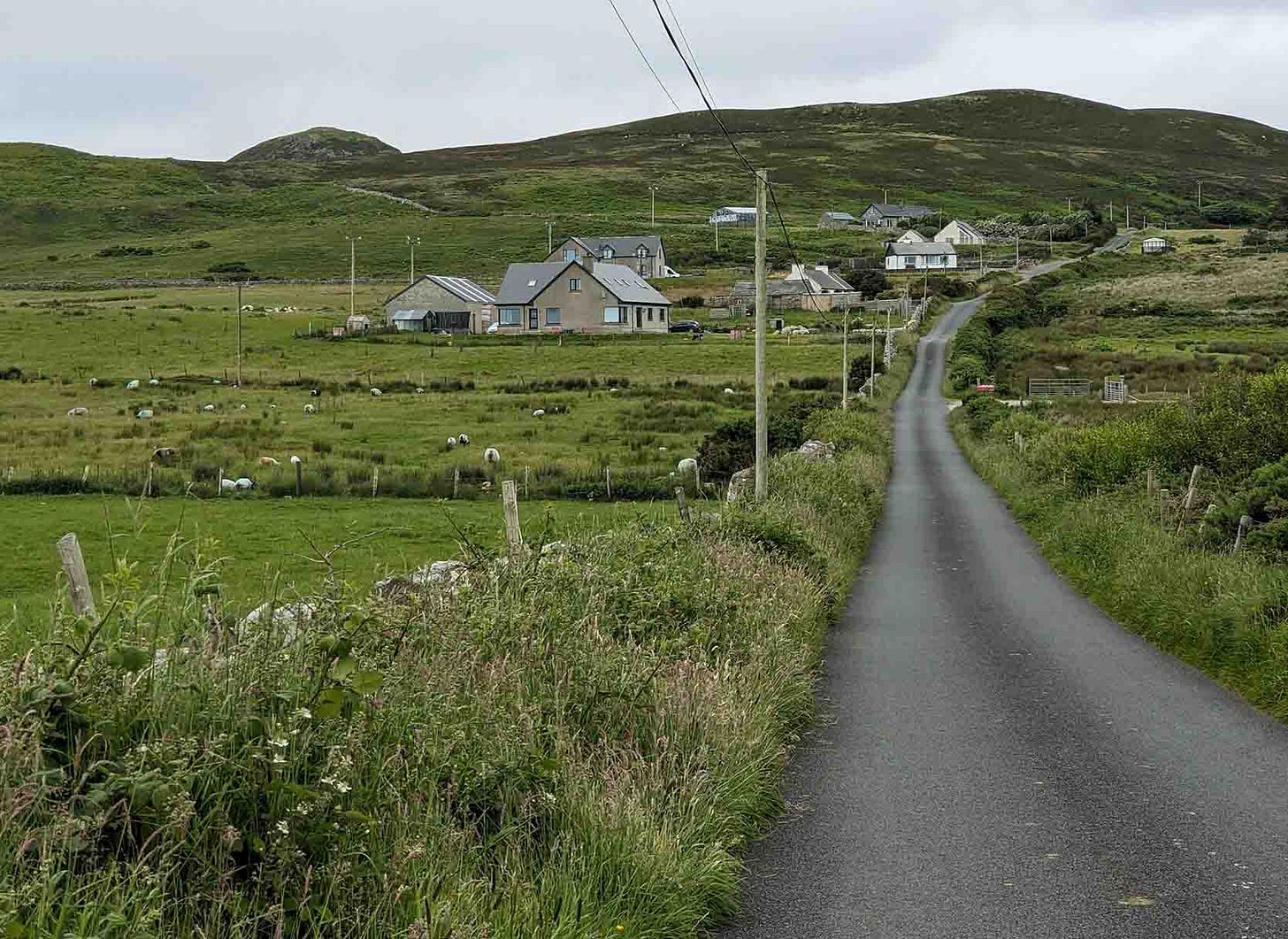
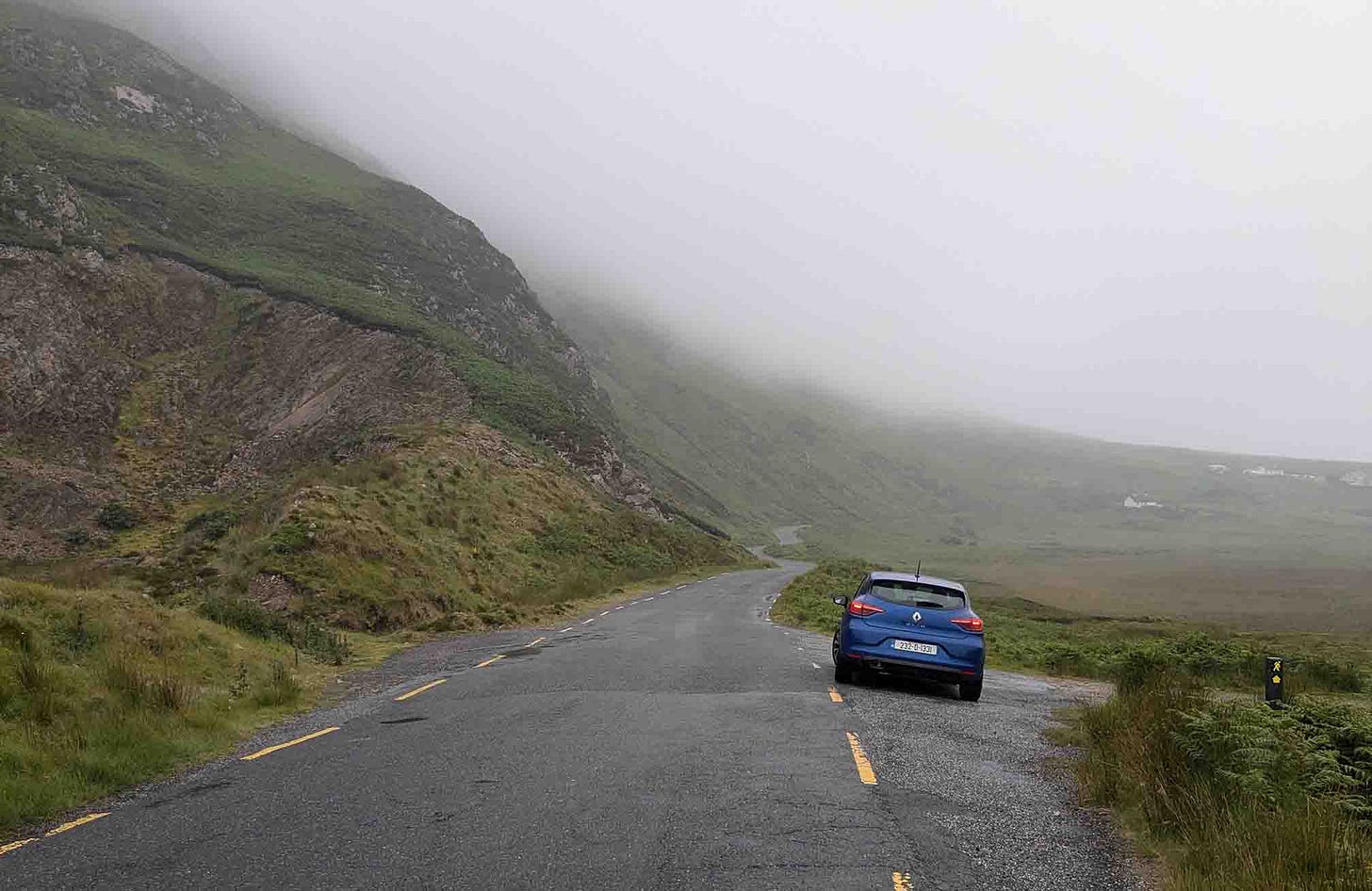
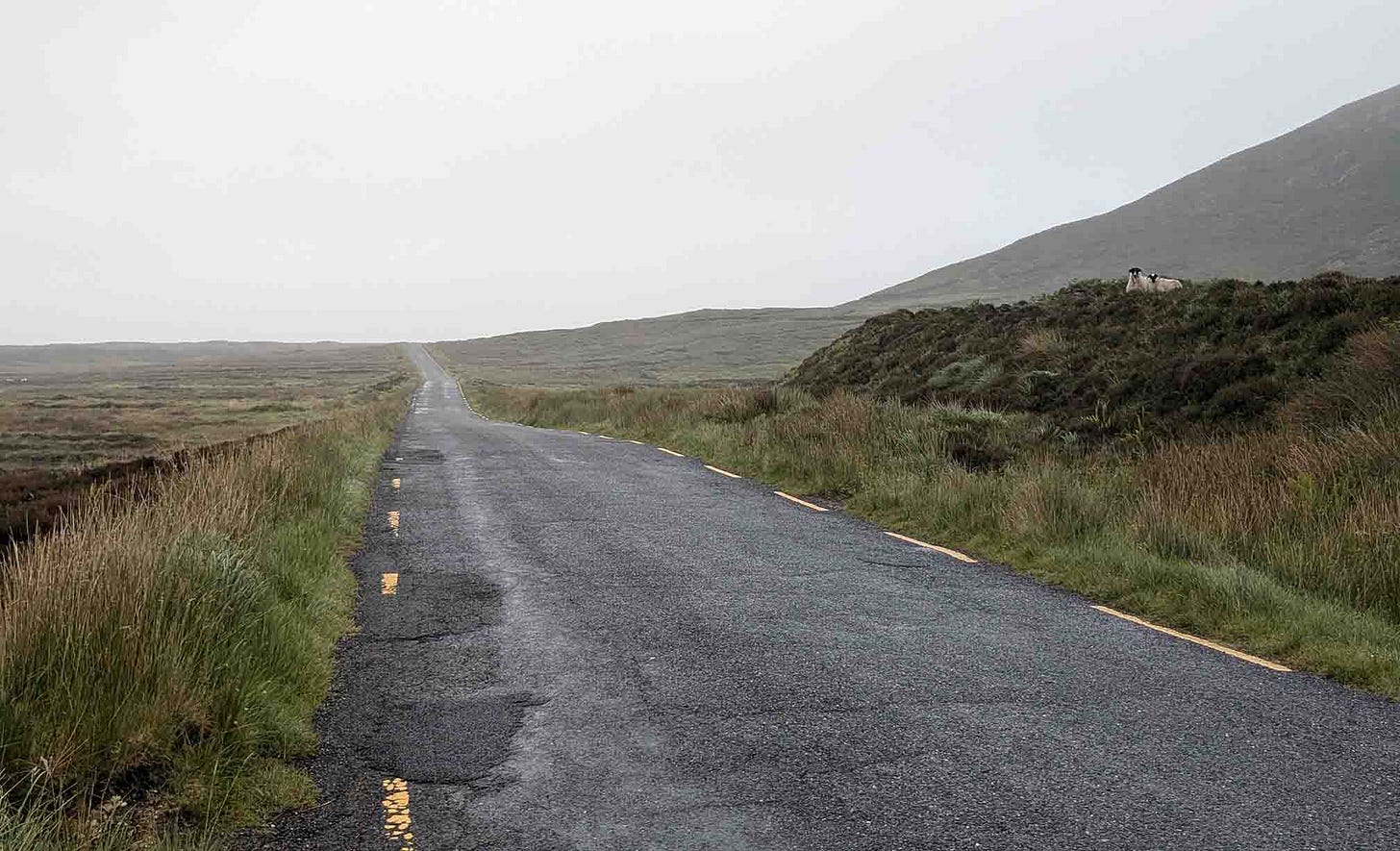
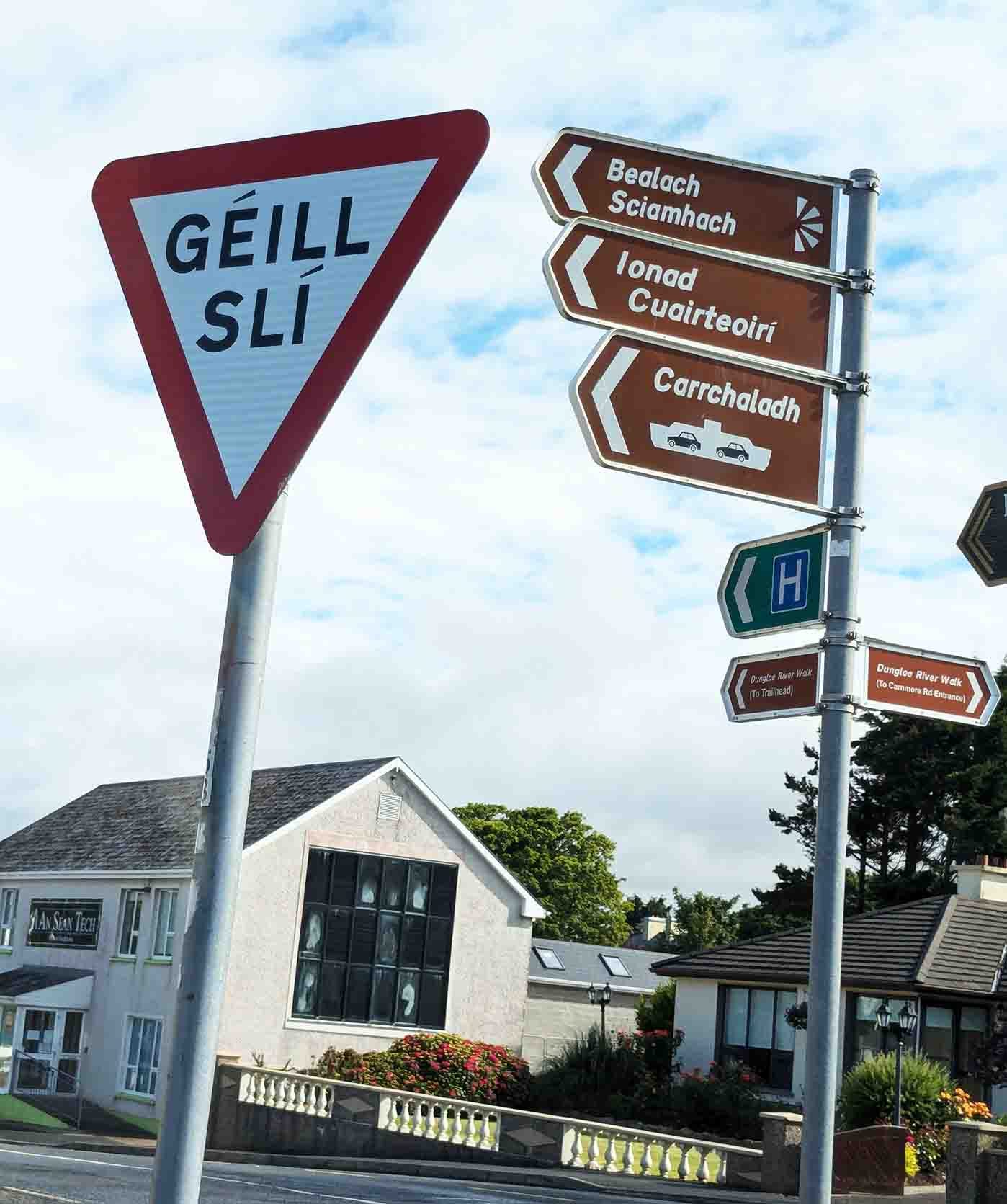
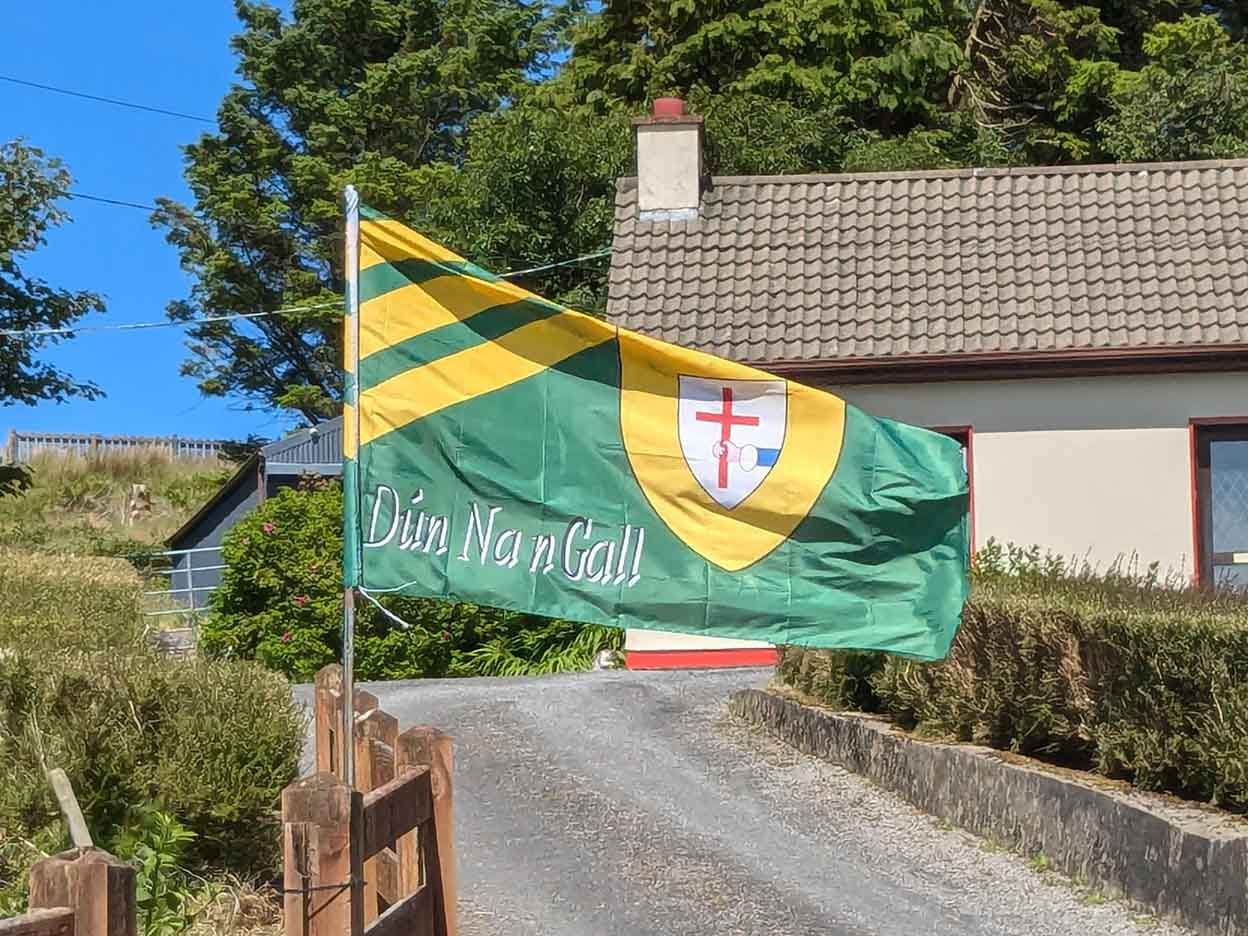
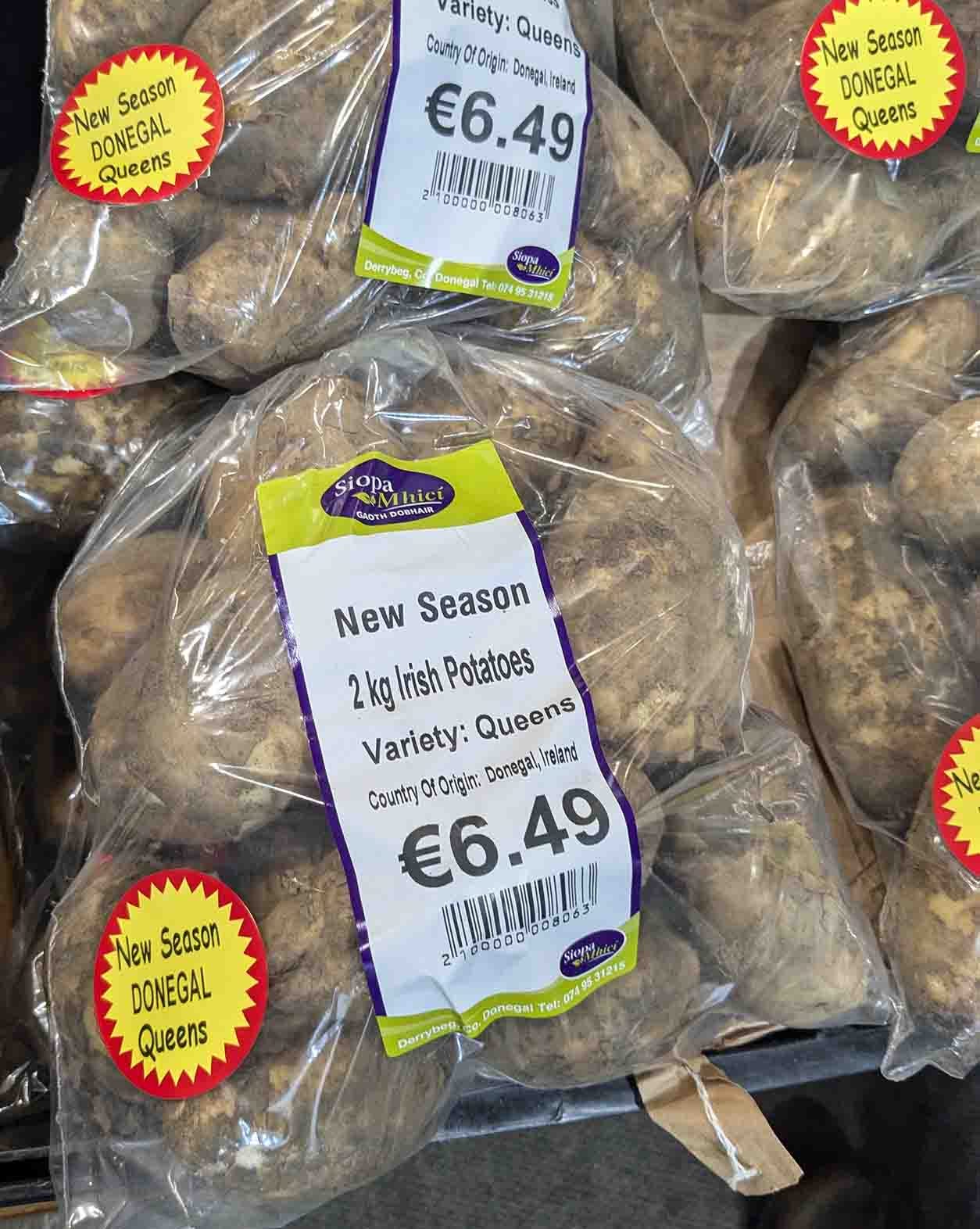
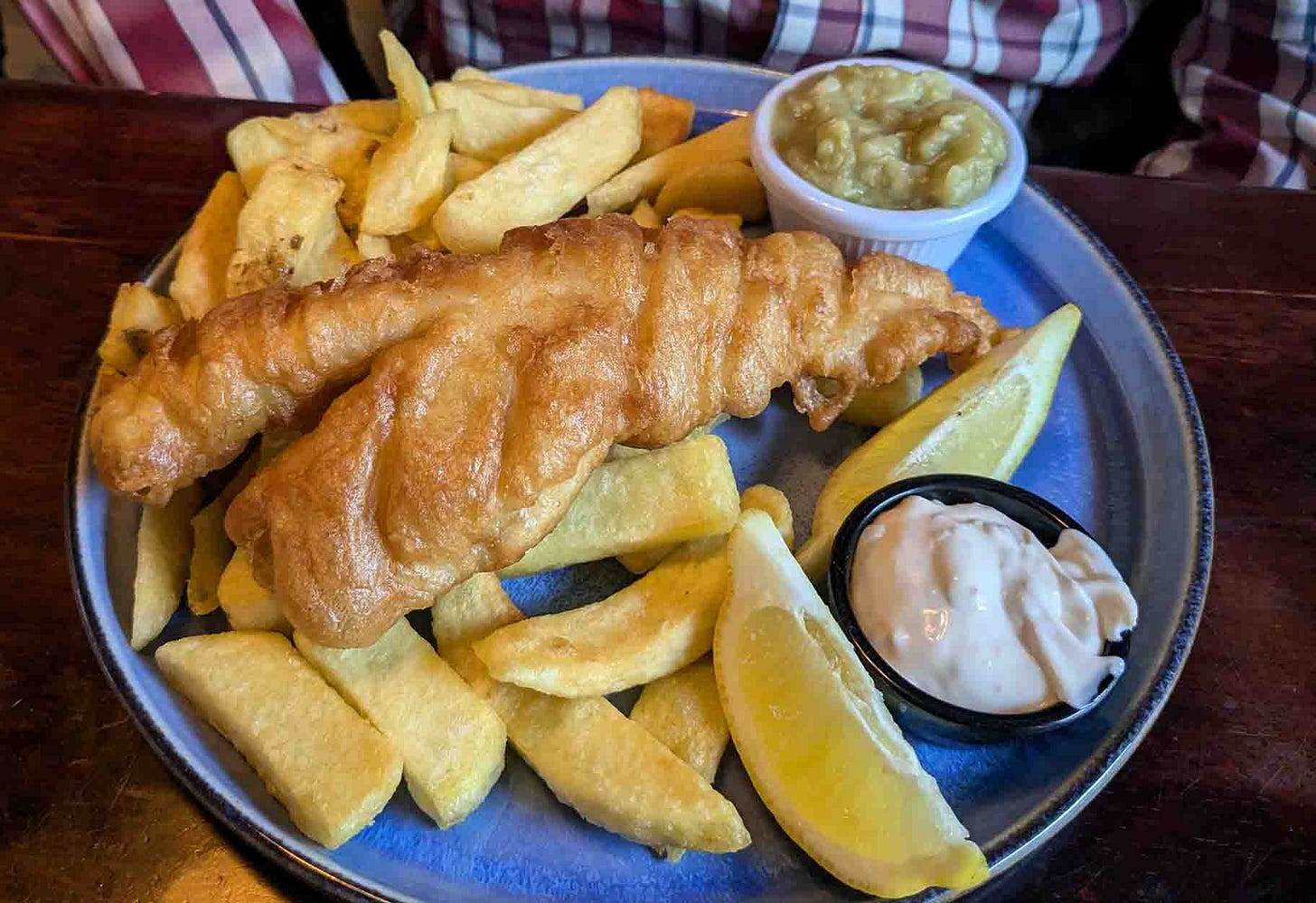
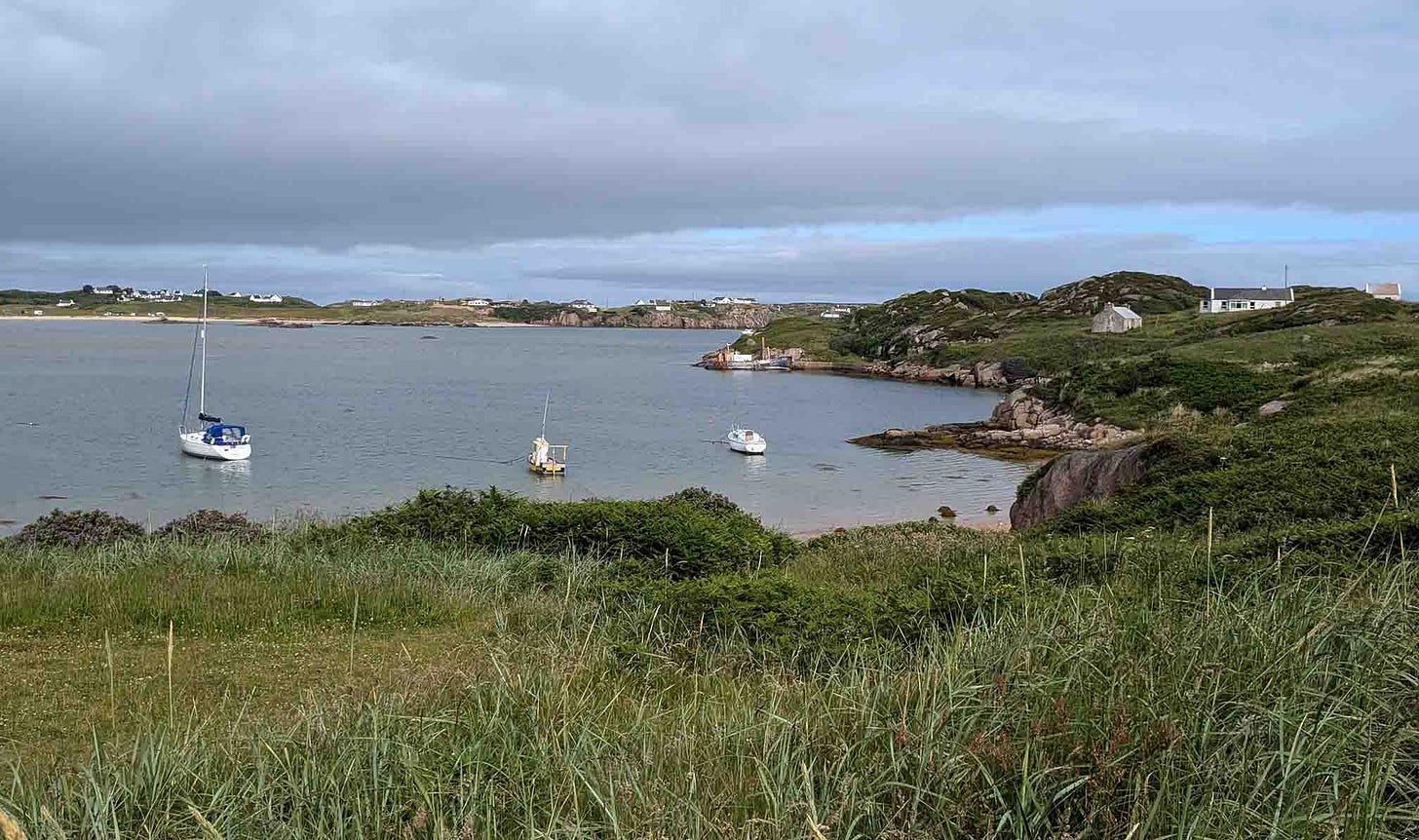
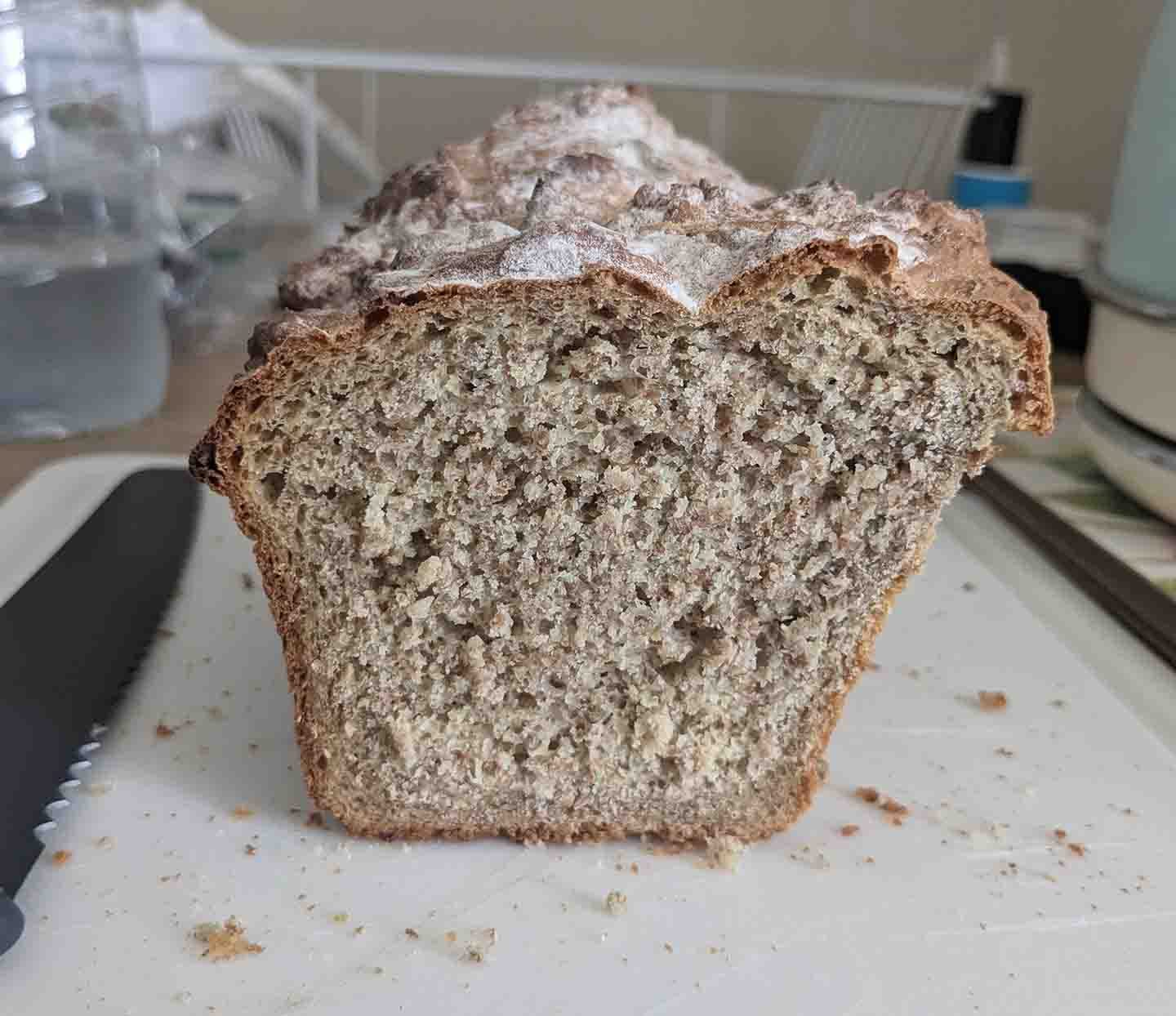

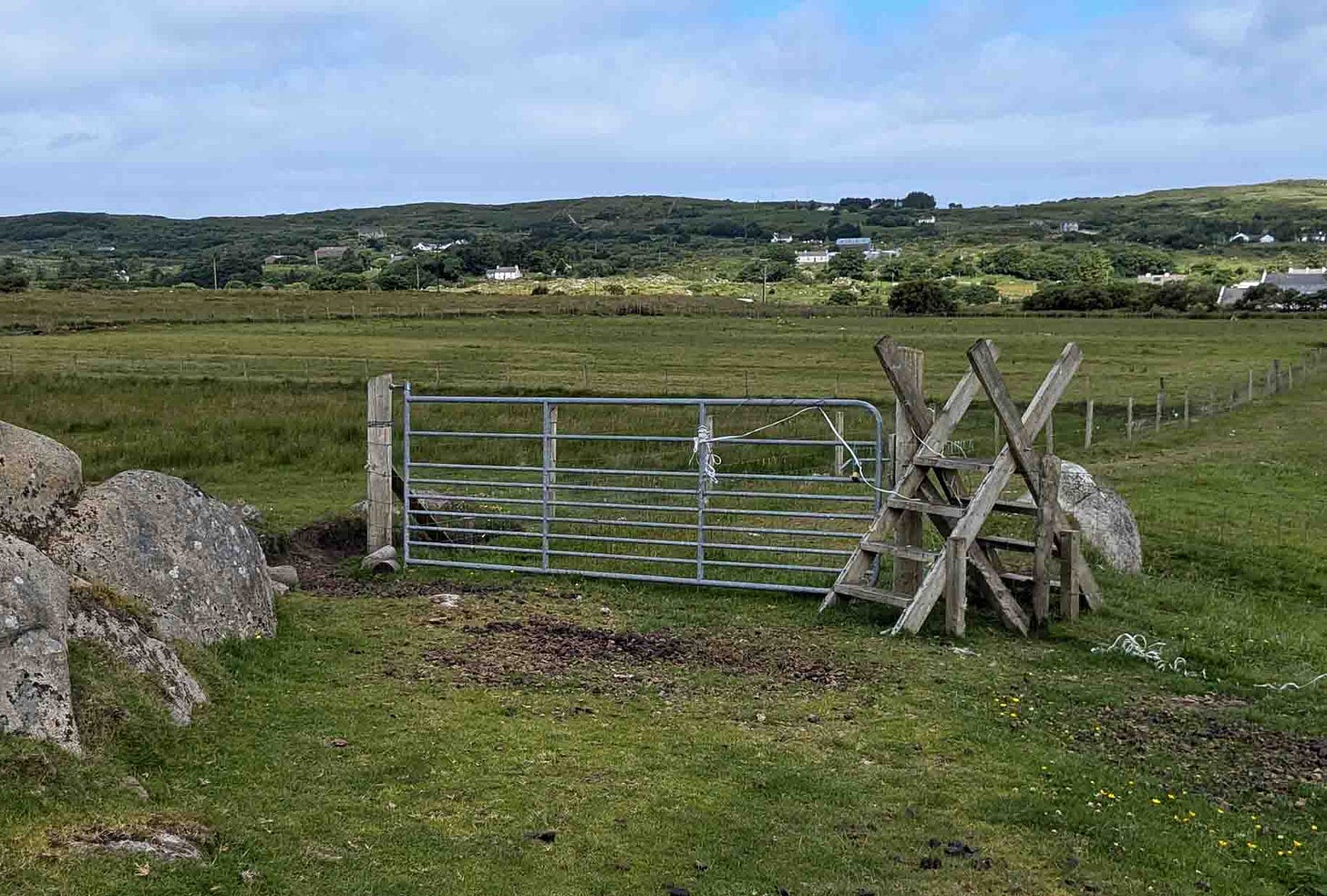
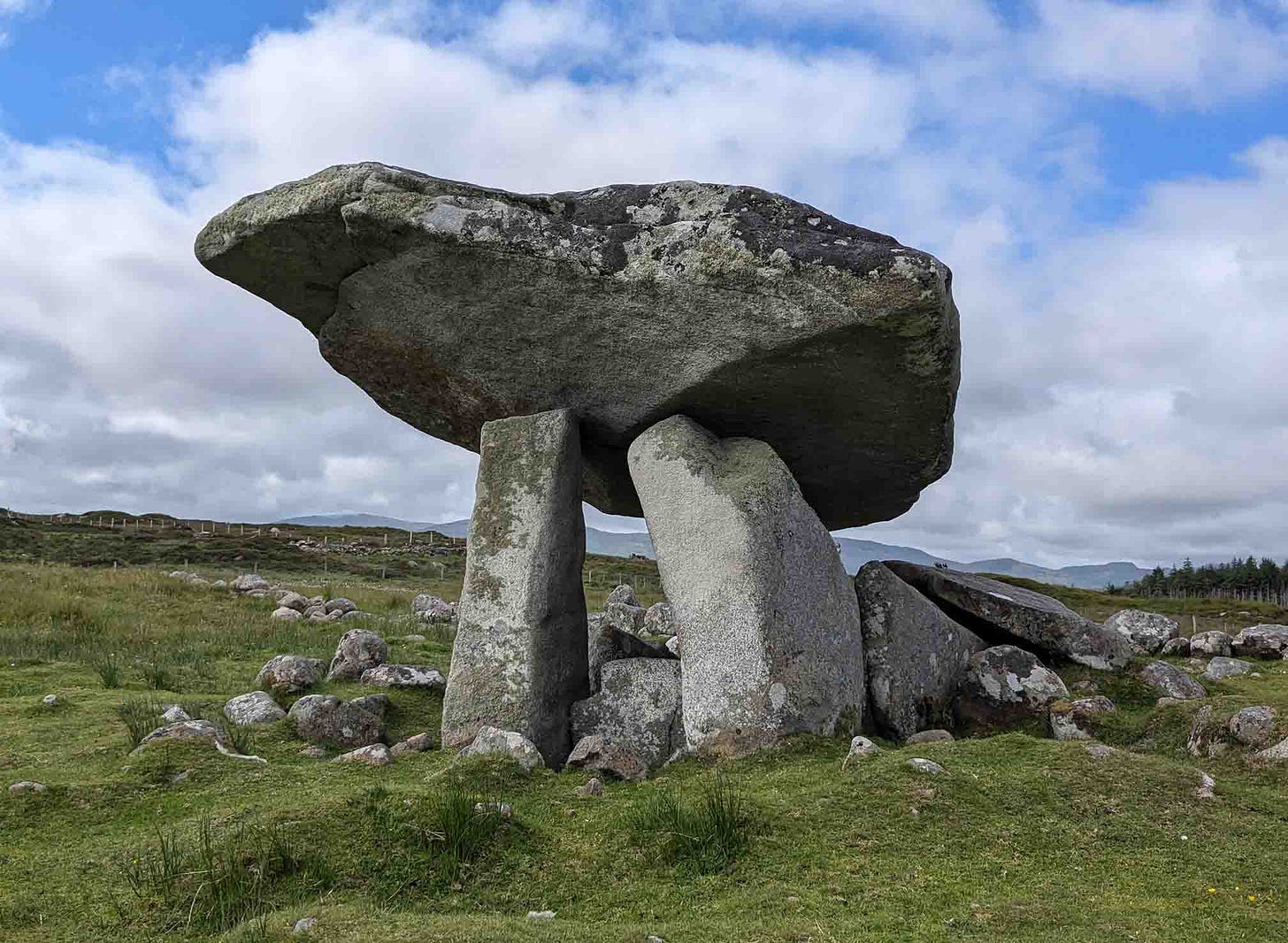
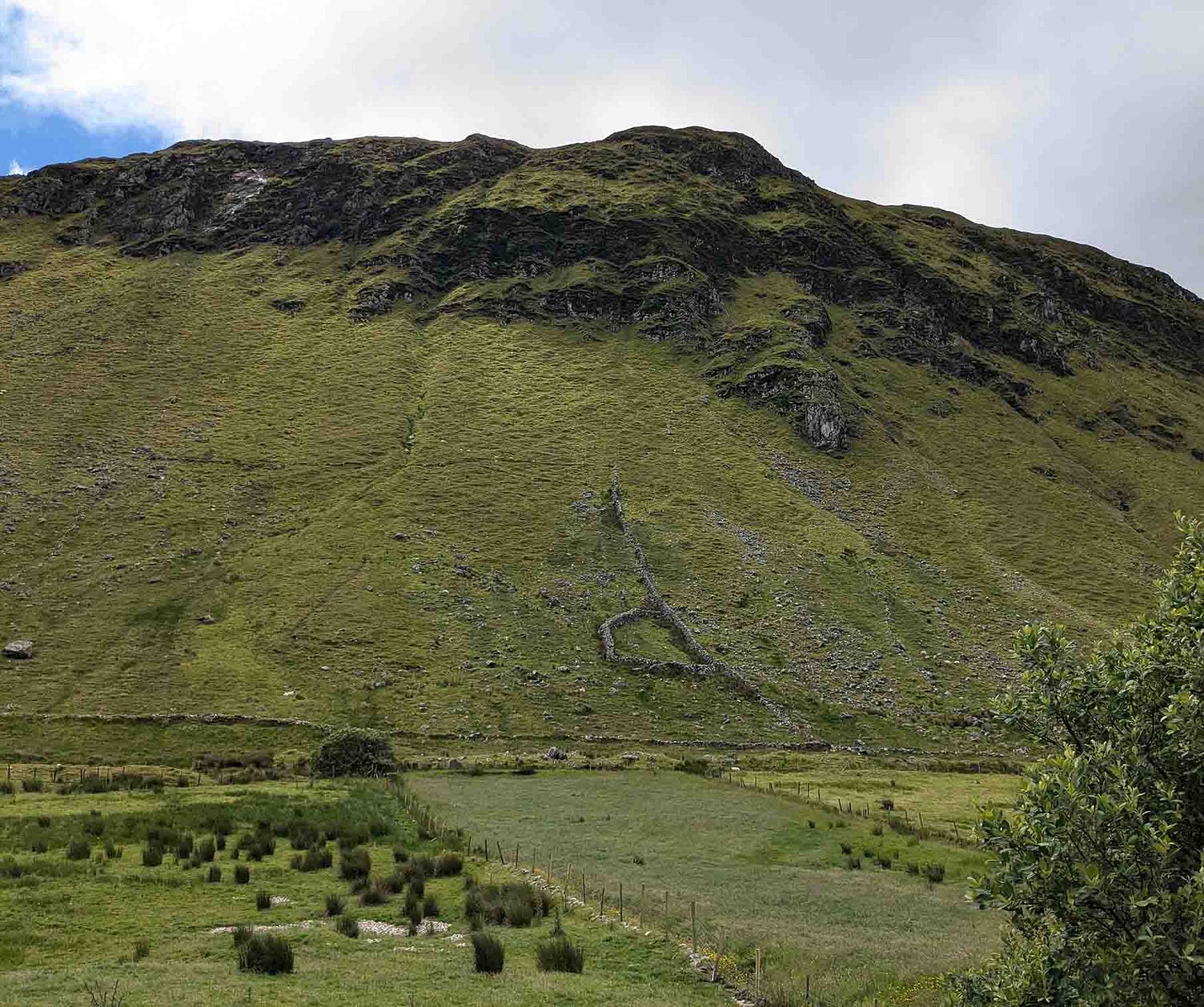
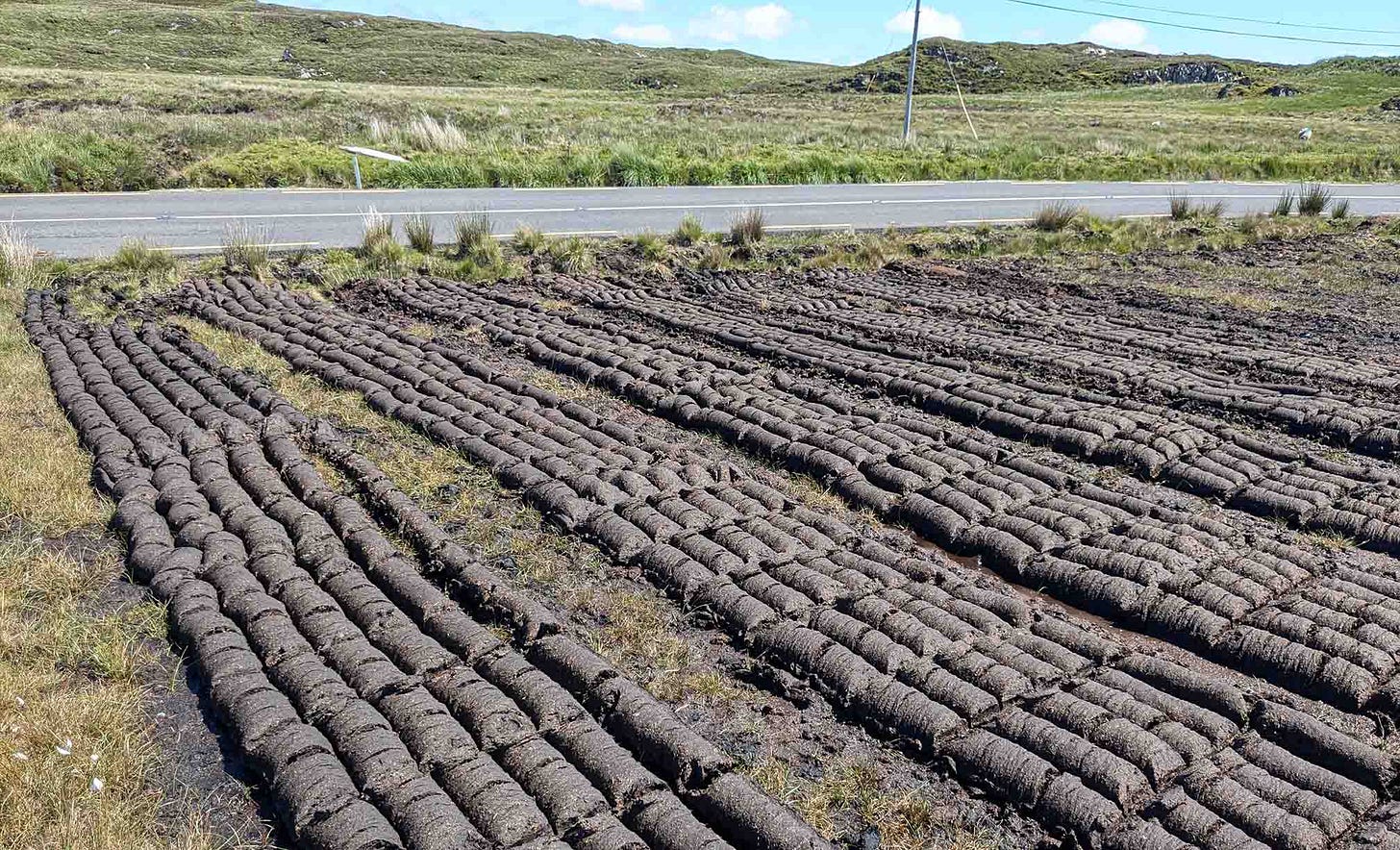
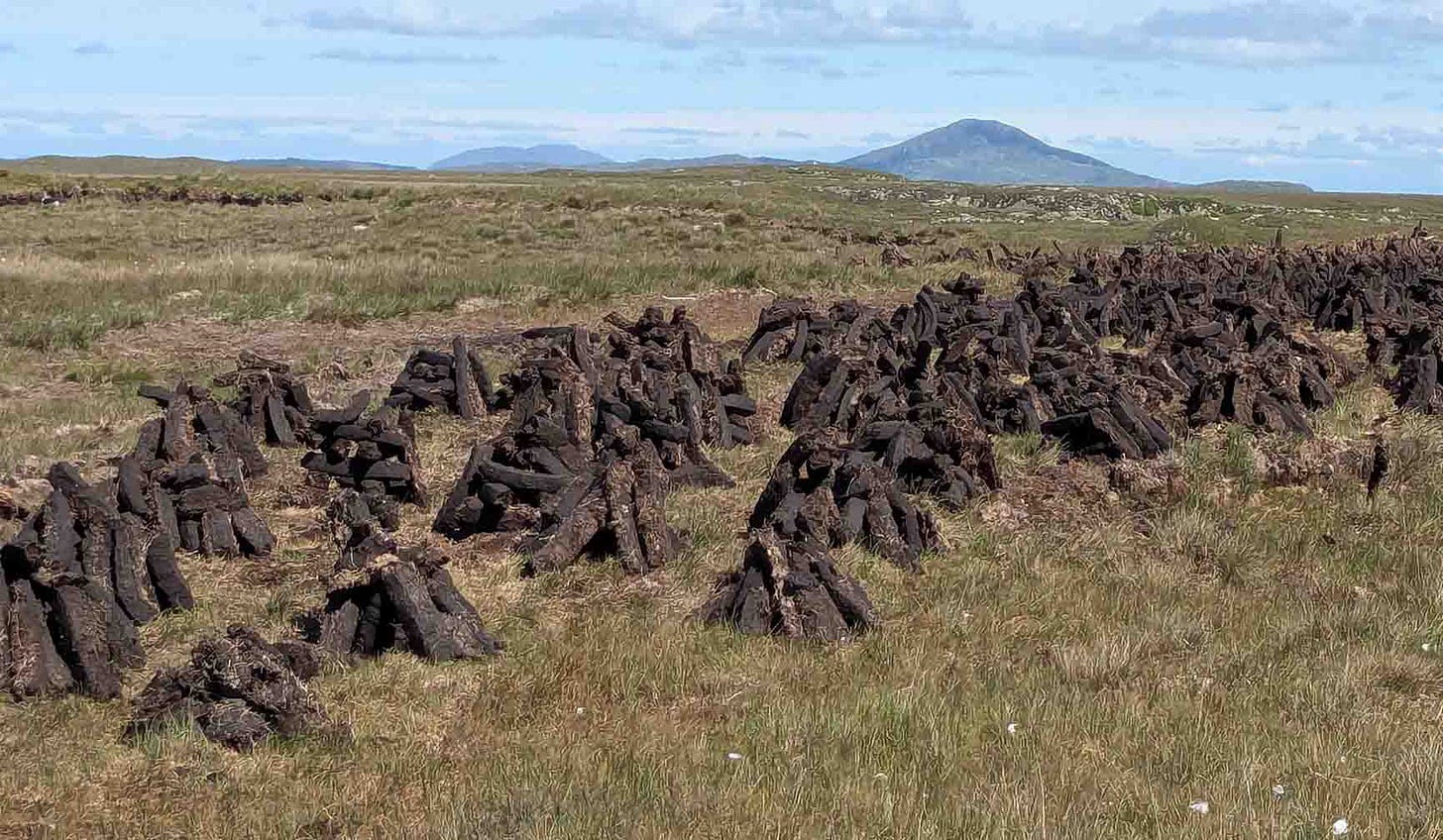
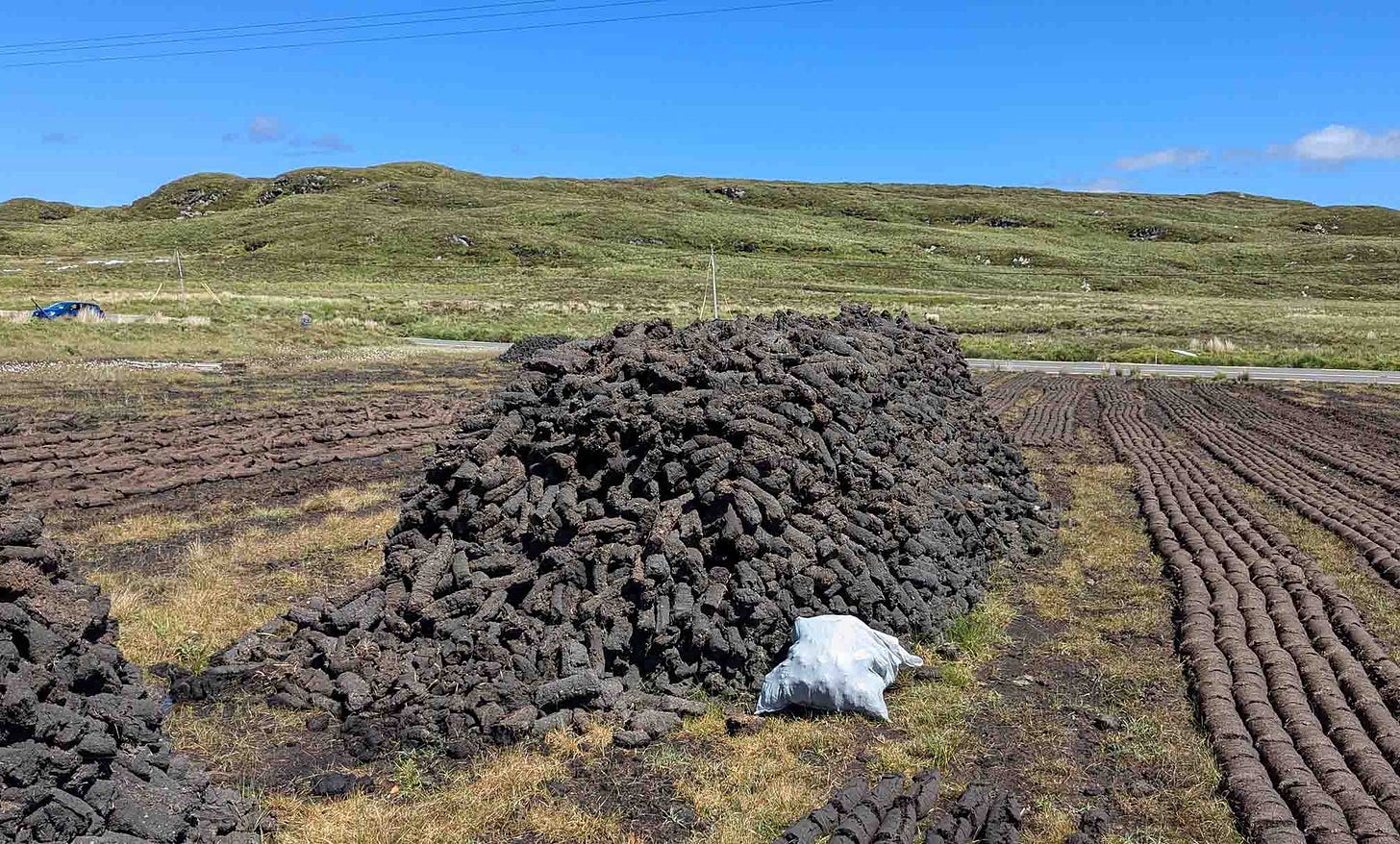
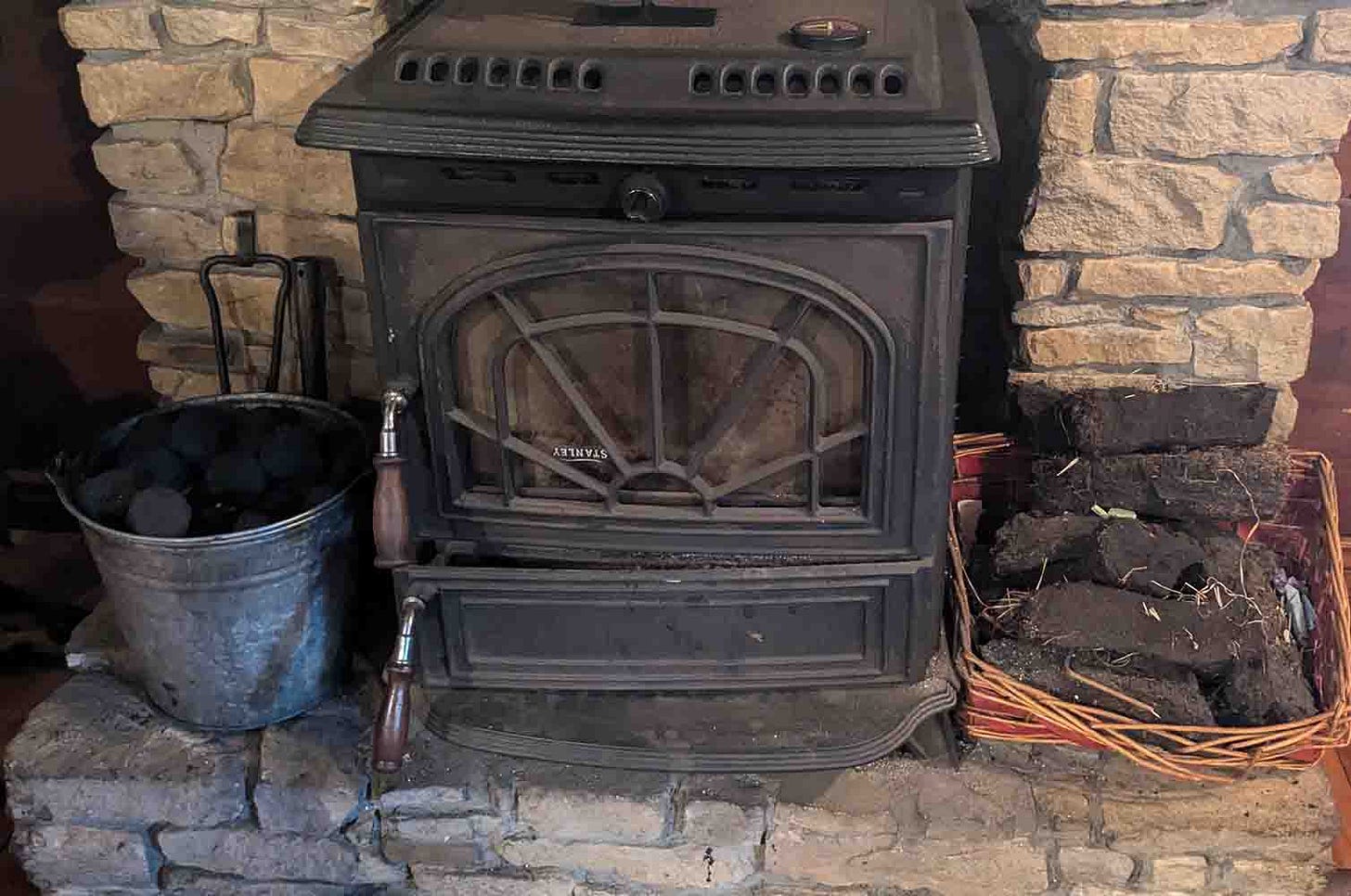
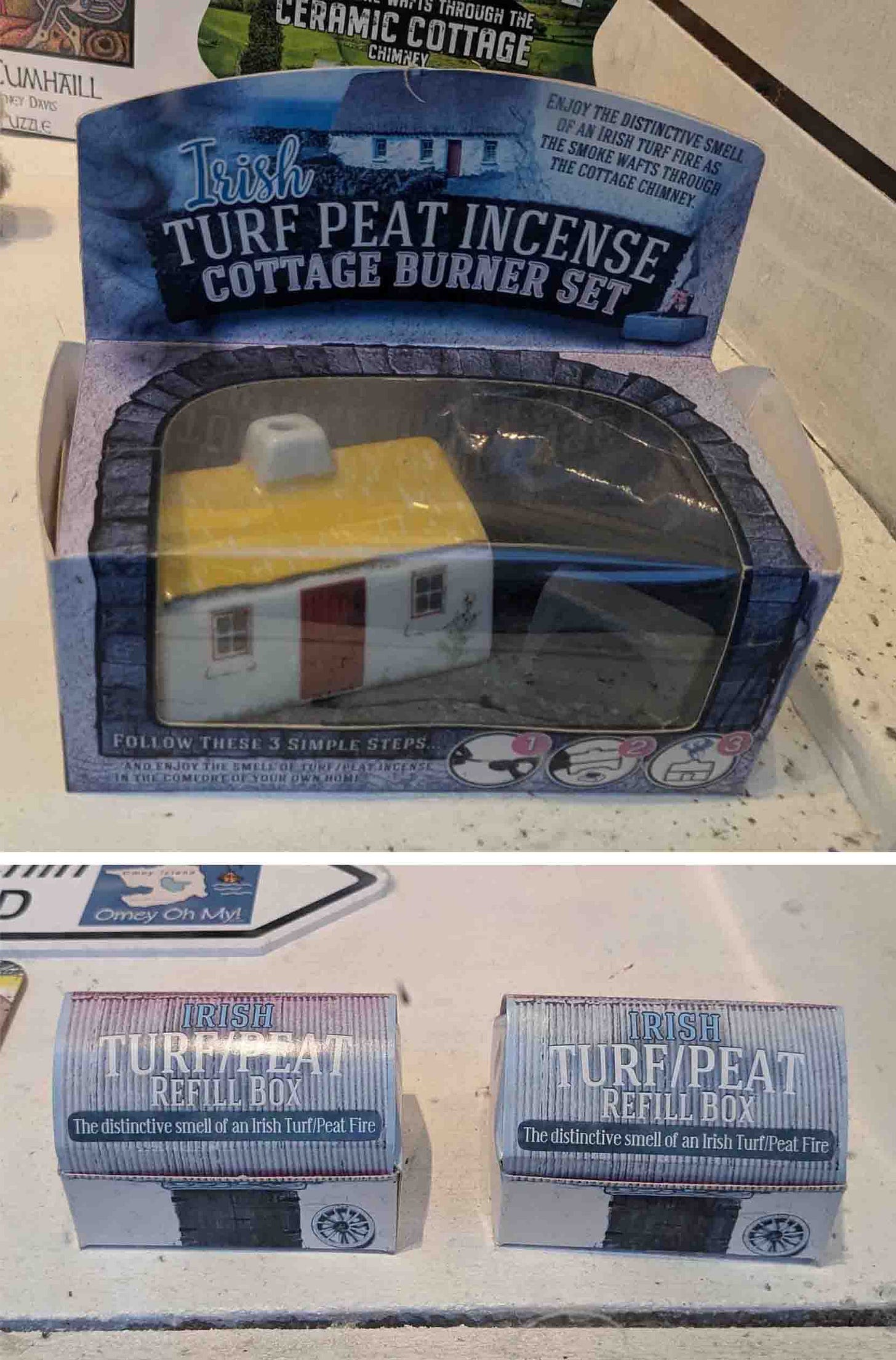
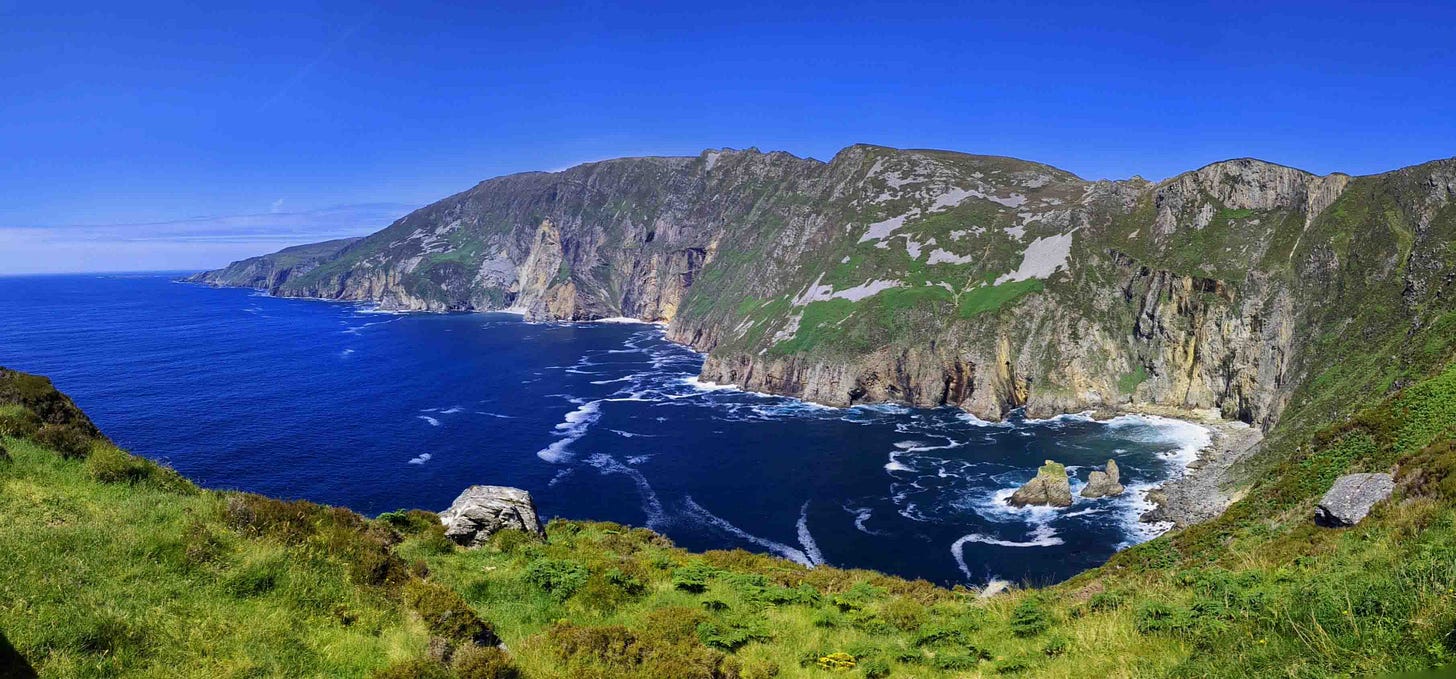
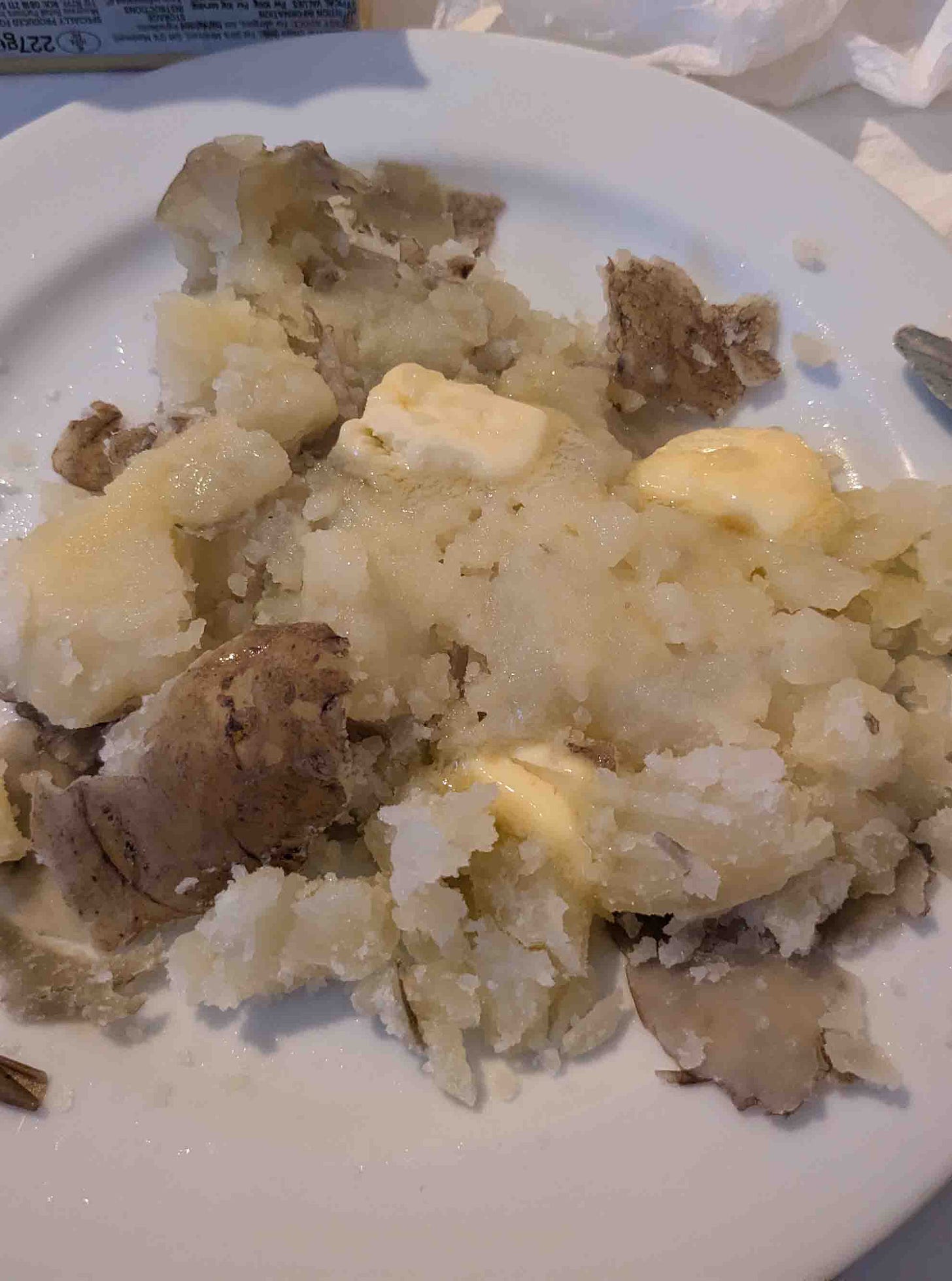
This was great-- loved the photos. Looks much like the Pacific Northwest, minus the centuries-old structures. I was particularly intersted in the columnar basalt, which also appears along the Columbia River (see https://hugefloods.com/Basalt.html). Really interesting to see it in that context, basically from above vs below. The potatoes I'd really like to weight against the best from Idaho!